- Knowledge Base
- Free Resume Templates
- Resume Builder
- Resume Examples
- Free Resume Review
Click here to directly go to the complete Artist Cover Letter sample.
Is drafting an artist cover letter important?
The answer to that is a YES!
A professionally drafted cover letter can help you during job applications. It can help you elaborate on details of your experience or skills that might not be available on your artist resume .
What you include in your artist cover letter will depend on your journey and the vacant position that you are targeting.
For instance, if you are writing an art director cover letter, it must include information relevant to the position, which may include proficiency with illustration tools to project management skills.
To get started, read on to know about:
- What is the best format for an artist cover letter?
- What to include in your artist cover letter?
- How do you write a cover letter for an artist?
- What to avoid when writing a professional artist cover letter?

What Does a Successful Cover Letter Look Like?
The cover letter gets you brownie points and thus must contain compelling content, but it must look appealing to intrigue the hiring manager to read it along with the resume.
Choosing a suitable format helps to make the cover letter easier to understand and get past the applicant tracking system ( ATS ).
Keep these points in mind while drafting your art director cover letter:
- Use 10 to 12 points as font size
- Align the content to the left
- Use 1-1.5 line spacing
- Use double spaces between paragraphs
- Use 1” margin on all sides
Also Read: How to pick a suitable cover letter design
What to Include in a Cover Letter for an Art Job?
A cover letter is a single-page professional document. Thus, it must follow a strategic structure that can help you communicate your caliber to the recruiters.
You should include the following details in your artist cover letter:
Greetings/ Salutation
Address the cover letter to the hiring manager directly. You might find the name of the hiring manager on the job description or find it with a simple search on LinkedIn or the company website.
Body of the Cover Letter
Write 2-3 paragraphs for the body of the cover letter to include relevant skills and experience for the arts-related position. This section should be tailored to the description of the open position.
For instance, if you are writing a cover letter for museum job then the content would be vastly different from a theater cover letter.
Closing Statement
A balanced closing statement that is enthusiastic yet polite close is a must for the cover letter. It should communicate your interest in further discussions with the hiring managers over the phone or face-to-face. Include a call to action such as - “I would love to discuss possibilities.”
Contact details
Do not forget to mention your contact details so that the hiring manager can contact you. Include your full name, contact number, and name of the city. Most importantly include your portfolio details here.
Now that we know what to include in our cover letter, let us learn the tips for writing an effective art job cover letter.
Also Read: How to write a cover letter that can land you a dream job?
Artist Cover Letter Sample
How do i write a cover letter for a creative job.
There are so many jobs up for grabs in the professional world for artists.
Your artist cover letter would prioritize different aspects of your journey, qualifications, and skills based on the role that you are applying for.
Here are some general tips on how to write a cover letter for an art job :
Convey That You Are a Great Fit
The basic goal for your cover letter is to make a case for your candidacy. Mention points that would be valued by the hiring manager or the company and are important to you. You would know what points to mention after researching about the company, its culture, and its values.
For instance, when writing an artist cover letter, you would want to include a passion for the art over the quantity of work if the hiring manager would value it more.
Emphasize Relevant Skills
Do not limit yourself to just including skills that are related to your art profession. Include relevant soft and hard skills in your art teacher cover letter.
For instance, if you are writing a creative director cover letter then you must include leadership, time-management, and communication skills in your letter. It goes to show that you would manage a team well and execute the project efficiently.
Likewise, draft a makeup artist cover letter if you are seeking a job in the stated field. Emphasizing your relevant skills can make you stand out as the perfect applicant.
Someone writing a theater cover letter would include details of the plays they have acted in or directed, or experience working with co-artists in their letter.
Also Read: How to draft a professional 3D artist resume?
Share Your Portfolio
This is a no-brainer when seeking an art job where your capabilities would be judged during the hiring process.
Professionals in the tech field can benefit by sharing projects or coding samples posted on your digital websites such as GitHub or Kaggle.
Sharing your portfolio increases your chances of getting shortlisted for the next round. It builds trust that you would be able to function proactively in the role.
End with a Call to Action
Seal the deal by adding a call to action at the end of your letter. For instance, when writing a cover letter for a museum job, make sure to end the cover letter with, “I would love to connect with you and discuss further possibilities ...".
This will encourage the recruiters to reach out to you for further meetings or interviews.
Proofread Twice Before Sharing the Document
This goes for all kinds of documents that you might end up sharing with the hiring manager. Nobody would like to read a document full of silly mistakes and errors.
Thus, make sure to read your art cover letter with a keen eye for detail and a focused mind after you are done writing it.
Also Read: How to end a cover letter?
Things to Avoid in Your Artist Cover Letter
Apart from knowing what to add to your cover letter, you need to be aware of what to avoid while drafting your artist cover letter.
Avoid the following mistakes while drafting your artist cover letter:
Basic Salutation
Never begin the salutation with, ‘To whom it may concern’.
A cover letter is a personalized document, where addressing the hiring manager makes sense. Always personalize your salutations to depict attention to detail.
Example: Dear Ms. Jenkinson
Repetitive Information
Do not repeat the details mentioned in your resume again in your art teacher cover letter. This makes the cover letter redundant and wastes the hiring manager’s time.
Exceeding One Page Limit
Do not write an art cover letter that exceeds one page. A hiring manager hardly spends more than a minute over a cover letter and resume combined.
Do not load the cover letter with so much information that it exceeds one page. The hiring manager would reject your application otherwise.
Also Read: How long should a cover letter be?
Key Takeaways
Keep the following points in mind while drafting your artist cover letter:
- Choose a suitable yet professional format to make the cover letter look visually appealing
- Divide the letter into sections - salutation, body, closing statement, and contact details
- Include relevant information - qualifications, background, and skills in the body of the letter and convey why you would be a great fit for the role
- Include portfolio details in your letter to increase the hiring manager’s trust in you
- Always proofread before sharing the documents with the hiring manager
- Do not repeat the information already mentioned in your resume
Visit Hiration's online cover letter builder which has 24x7 chat support to assist you in drafting the best cover letter.
You can also write to us at support@hiration for further queries.

Share this blog
Subscribe to Free Resume Writing Blog by Hiration
Get the latest posts delivered right to your inbox
Stay up to date! Get all the latest & greatest posts delivered straight to your inbox
Is Your Resume ATS Friendly To Get Shortlisted?
Upload your resume for a free expert review.

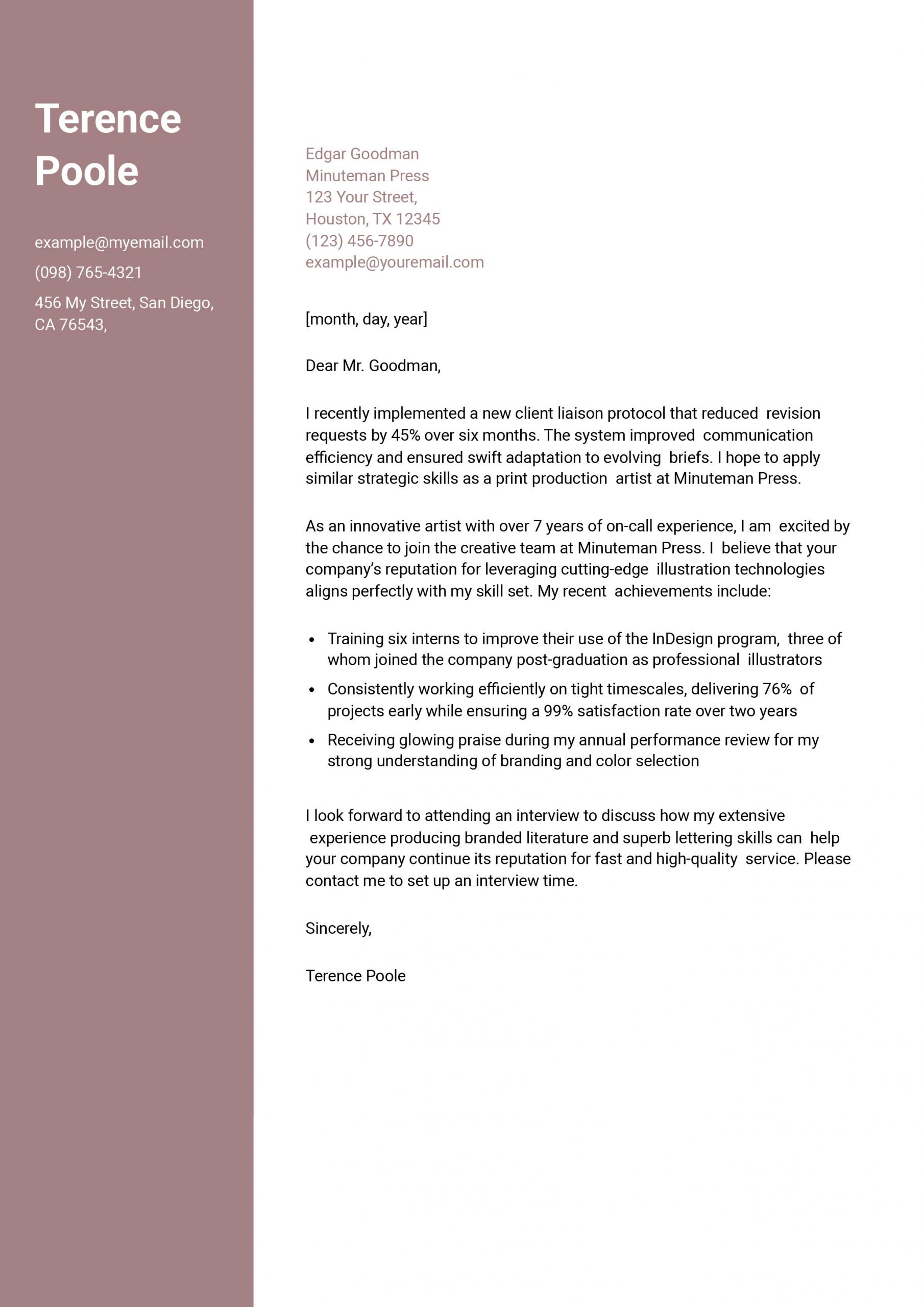
Artist Cover Letter Examples and Templates for 2024

- Cover Letter Examples
How To Write an Artist Cover Letter
- Cover Letter Text Examples
A good artist cover letter shows how you create works that are visually pleasing, engaging, or thought-provoking. Use this document to express your interest in the employer and cite your formal training and related skills, such as printmaking or animation.
The tips and examples below will help you write a cover letter that gets you interviews for your next job as an artist.
Artist Cover Letter Templates and Examples
- Entry-Level
- Senior-Level
When possible, connect each part of your cover letter back to the employer and its stated hiring needs. The following advice and examples will show you how to use this strategy so your letter is optimized for each application.
At the top of the page, include:
- Your resume contact header, which should give your full name, address , email, phone number, online portfolio or website, and LinkedIn or other social accounts, if applicable
- The recipient’s name, title, organization, and contact information (when available)
(Note: Feel free to omit this section when sending your letter as an email message, as long as your contact details are part of your email signature.)
Tyesha Stack Story Artist | [email protected] | (123) 456-7891 | 123 My Street, Los Angeles, CA 08642
May 25, 2024
Clorinda Witt Senior Hiring Manager Skydance Animation (753) 157-7531 [email protected]
2. Salutation
Address your recipient by name – this is the quickest way to signal you’re sending a job-specific letter and not a boilerplate. If you can’t find the person’s name, use a variation of “Dear Hiring Manager” so your greeting is still tailored somewhat to each artist job opening.
Dear Mr. Goodman,
Dear Minuteman Press Hiring Manager:
3. “Hook” or introduction
Catch the reader’s attention by citing an achievement from your resume or a key credential the employer seeks in applicants. Then, connect that highlight to your main strengths and overall candidacy for the advertised artist role. Refer to the hiring organization by name here to further convince the recipient you’re applying to them specifically.
As an alternative to the work highlight approach, you can set yourself apart by networking. Begin your letter by citing any personal or professional connections you have with the hiring manager. If someone at the organization alerted you to the job, use a line like “I was excited to hear from your colleague [Name] about [Organization]’s new artist opening.” Or, if you’ve already met your recipient, mention that with a line like “It was great speaking with you at the [event] last month.”
I recently implemented a new client liaison protocol that reduced revision requests by 45% over six months. The system improved communication efficiency and ensured swift adaptation to evolving briefs. I hope to apply similar strategic skills as a print production artist at Minuteman Press.
4. Job- or employer-specific paragraph(s)
This section is crucial, so think it through fully for each application in your job search.
On a separate document or sheet of paper, take 10 minutes to brainstorm why this artist position or employer interests you based on the job posting. When you’re done brainstorming, review your notes: Do any stand out as important or persuasive? Adapt those points into one or two brief paragraphs that speak to the job opening at hand. By making this description a central part of your letter, you’ll have a better chance of persuading the manager to give you a call.
Following this explanation, cite a few more of your artist skills or achievements , possibly as bullet points.
As an innovative creator with more than two years of experience in the animation industry, Skydance Animation’s commitment to designing incredible visuals by leveraging cutting-edge technology appeals to me. My recent accomplishments show I have the technical and creative abilities to excel on your team. They include:
- Being selected out of 25 story artists to create a range of facial expressions for the main character of a feature film
- Mentoring three student interns to improve their understanding of storyboarding and composition
- Receiving praise five times during performance reviews for my exceptional work ethic and productivity
5. Conclusion
Finally, request an interview and thank the hiring manager for their time and attention. Consider briefly restating why this artist job interests you. You can also use this section to refer to your resume or other application materials. To end your cover letter, use a simple closing like “Sincerely” or “Best regards” and then your name.
I look forward to attending an interview to discuss how my extensive experience producing branded literature and superb lettering skills can help your company continue its reputation for fast and high-quality service. Please contact me to set up an interview time.
Terence Poole
Artist Cover Letter Tips
1. show your creativity and success in your field.
Start your letter strong by describing a key way you’ve applied your talents, honed your craft, or explored new styles or subject matter. Then, connect this work to the big picture by showing how it served a client or engaged an audience.
Last year, I collaborated with two colleagues to create the color concepts for one of the top five animated films of the year. My supervisors praised my team’s use of paintings and marker sketches to produce a cohesive scheme. I am excited to demonstrate these skills as a story artist at Skydance Animation.
2. Explain why you’re drawn to the opportunity
When writing your body paragraph(s), consider what this artist job has in common with your background. For instance, maybe the role centers on developing community art programs, a key focus of your most recent position. Or maybe it works with ceramics, textiles, or another medium or material in line with your formal training. Also, consider what you know about the employer’s creative vision or sensibility and how that compares to yours.
As an innovative artist with over seven years of on-call experience, I am excited by the chance to join the creative team at Minuteman Press. Your company’s reputation for leveraging cutting-edge illustration technologies aligns perfectly with my skill set.
3. Highlight your other art skills
Use your bullet points list to cover your success in other key work areas for an artist, like composition, materials selection, or client relations. Show each skill in action by describing how you applied it toward a specific art project or endeavor. Consider also using this section to link hiring managers to relevant work samples in your online portfolio.
My recent achievements include:
- Training six interns to improve their use of the InDesign program, three of whom joined the company post-graduation as professional illustrators
- Consistently working efficiently on tight timescales, delivering 76% of projects early while ensuring a 99% satisfaction rate over two years
- Receiving glowing praise during my annual performance review for my strong understanding of branding and color selection
Artist Text-Only Cover Letter Templates and Examples
Dear Ms. Witt,
Last year, I collaborated with two colleagues to create the color concepts for one of the top five animated films of the year. My supervisors praised my team’s use of paintings and marker sketches to produce a cohesive scheme. I am excited to demonstrate these skills as a story artist at Skydance Animation.
As an innovative creator with more than two years of experience in the animation industry, Skydance Animation’s commitment to creating incredible visuals by leveraging cutting-edge technology appeals to me. My recent accomplishments show that I have the technical and creative abilities to excel on your team. They include:
I would love to meet to discuss how I can help your organization continue its reputation as an industry leader. Please get in touch to arrange a time and date.
Tyesha Stack
Terence Poole Print Production Artist | [email protected] | (385) 294-5035 | 432 First Street, Colorado Springs, CO 39503
May 18, 2024
Edgar Goodman Senior Hiring Manager Minuteman Press (485) 244-5738 [email protected]
As an innovative artist with over 7 years of on-call experience, I am excited by the chance to join the creative team at Minuteman Press. I believe that your company’s reputation for leveraging cutting-edge illustration technologies aligns perfectly with my skill set. My recent achievements include:
Micah Smith Artist | [email protected] | (123) 456-7890 | 123 Beach Boulevard, San Diego, CA 92101
May 23, 2024
Katie Turner Senior Art Director ArtCo (987) 654-3210 [email protected]
Dear Ms. Turner,
For the past decade, I have been working to improve my craft. I am constantly challenging myself to incorporate new styles and mediums into my art. As a result, I feel that I am more than qualified to fulfill the duties and responsibilities as an artist at ArtCo.
Most recently, in my role as the senior artist at Art Home, I have been a key contributor in developing art programs for the community and ensuring a high-quality work environment for all employees. Some of my proudest accomplishments include:
- Creating an after-school art class for low-income children that achieved a 95% satisfaction rate, according to surveys
- Introducing sustainable art materials to help the business become more environmentally friendly
- Developing an art supply donation program to reduce waste by 30%
As you can see, I am a dedicated artist who would thrive at ArtCo. My passion for art, interest in serving the community, and experience with a variety of projects make me an outstanding candidate for this position. I look forward to hearing back from you.
Micah Smith
Artist Cover Letter Frequently Asked Questions
What’s the best way to start a cover letter -.
With a clear example of your success in the role you’re pursuing. The concept of “show, don’t tell” absolutely applies to your cover letter’s first paragraph. For instance, don’t just tell the hiring manager you’re an “efficient illustrator.” Display you have this quality by describing a time you came in ahead of the deadline and what impact that had on overall production.
How long should my cover letter be? -
No more than one page, or around 250 words. Hiring managers expect an applicant’s cover letter to be shorter than their resume , so keep it concise. Resist the urge to tell your whole career story, even if you have an extensive background as an artist. Give just enough detail to pique hiring managers’ interest so they take a closer look at your resume.
What should my cover letter’s design look like? -
Your resume’s. Carry over all of that document’s basic format settings , like font style, line spacing, and page margins.
Craft a new cover letter in minutes
Get the attention of hiring managers with a cover letter tailored to every job application.

Jacob Meade
Certified Professional Resume Writer (CPRW, ACRW)
Jacob Meade is a resume writer and editor with nearly a decade of experience. His writing method centers on understanding and then expressing each person’s unique work history and strengths toward their career goal. Jacob has enjoyed working with jobseekers of all ages and career levels, finding that a clear and focused resume can help people from any walk of life. He is an Academy Certified Resume Writer (ACRW) with the Resume Writing Academy, and a Certified Professional Resume Writer (CPRW) with the Professional Association of Resume Writers & Career Coaches.
Check Out Related Examples
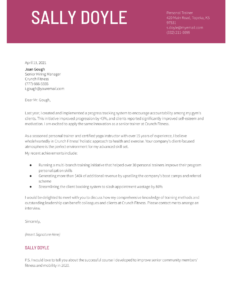
Artist Resume Examples and Templates
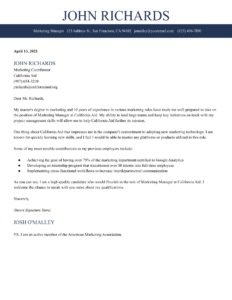
Graphic Design Cover Letter Examples and Templates
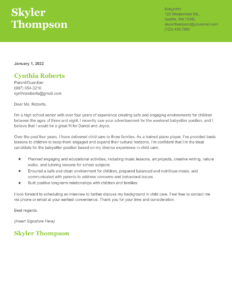
Photographer Cover Letter Examples and Templates
Build a resume to enhance your career.
- Resume Versus Curriculum Vitae Learn More
- The Best Fonts for Your Resume Learn More
- What’s the Difference Between a Cover Letter and a Letter of Intent? Learn More
Essential Guides for Your Job Search
- How to Land Your Dream Job Learn More
- How to Organize Your Job Search Learn More
- How to Include References in Your Job Search Learn More
- The Best Questions to Ask in a Job Interview Learn More

- Resume Templates Simple Professional Modern Creative View all
- Resume Examples Nurse Student Internship Teacher Accountant View all
- Resume Builder
- Cover Letter Templates Simple Professional Modern Creative View all
- Cover Letter Examples Nursing Administrative Assistant Internship Graduate Teacher View all
- Cover Letter Builder
Artist cover letter example

Whether you are working on the concept art for a video game or creating a brand image for a range of confections, artists are employed in many different capacities in the corporate and public sectors.
The one thing that these roles have in common is that artists are nearly always working in a diverse team towards a wider goal. Your portfolio will showcase your artistic talents, but your artist cover letter will outline how you (and your colleagues) bring them to life and make sure that they add value.
An artist cover letter can explore the passion of an artist for their work, describe their approach to creativity and explore the nature of their inspiration. When working as part of a wider team, an artist’s direction can be influenced from many angles and an artist cover letter should show that they are open to other ideas and able to translate concepts that are not their own (and sometimes that they even do not agree with).
Artists come across many obstacles in their creative journey, so an artist cover letter can offer examples of how they work through these moments and get to a solution that works for everyone involved. Artists are not seen as natural collaborators, so you have to show how you integrate the ideas of others into your vision.
This artist cover letter guide and cover letter example will consider how to tell the backstory of your portfolio. It’s part of our 125+ expertly-written cover letter samples that are a free resource for job seekers in any field or of any experience level.
Here’s what we’ll cover in this guide and our corresponding artist cover letter example:
- How to format your artist cover letter to best frame your story.
- Considering what to write in the intro, middle part and close of the cover letter.
- How to bring across your artistic talents using words as well as images.
- Tips about how to best influence the hiring manager and mistakes to avoid.
According to Indeed , there are 27,578 job openings for artists in the United States.
Best format for artist cover letter example
You might be tempted to create an artist cover letter that is wildly creative and different from everyone else, but we suggest that you let your artistic portfolio do the talking for your art skills and let the artist cover letter tell the story of your personality and how you will fit in.
The format for the cover letter should follow a tried-and-tested path:
- The cover letter header
- The greeting / salutation
- The cover letter intro
- The middle paragraphs (body of the letter)
- The ending paragraph of your cover letter (conclusion and sign-off)
This cover letter example guide offers some tips that are specific to artists, but as there are many different opportunities for artists across varying industries, some more general cover letter advice might also come in useful. Our comprehensive cover letter example guide offers more food for thought about other angles to consider.
Here is an artist cover letter example that might offer some inspiration:
Dear Ms. Bahnschild,
When you are looking to communicate a complicated idea, nothing beats a pictorial representation of what you want to convey. Having worked for two environmental consultancies as artist-in-residence, I feel that my passion for the future of our planet and twenty years of drawings about it will give me an edge at Lastwell Group.
Whether I am sketching the outline of an advertising campaign or creating digital art for a charity partner, I have experience in finding the right medium for the message. I enclose a portfolio of some of my most impactful work - with 12 industry awards and countless commendations from clients, my sixteen years of artistic experience in the environmental space have set me up to understand what makes an impact.
I understand that you also need an individual with the photography skills to document events and expeditions. I have been a certified photographer for the past six years and have taken pictures from the Arctic to the Amazon. My photos have been published in 40+ magazines and the associated PR has been estimated at an annual worth of $400k in donations to my employers. The right picture can reach deep into our social conscience.
My previous employers would say that I am a tenacious and inquisitive colleague, with an eye for the uncommon angle and a drive to tell a story in a way that no one has seen before. In a world where we are bombarded by messages, it is only the “different” that stands a chance of getting people to look twice.
I am a huge fan of your charity and have contributed many times over the years. I attended your tree planting event in Canada last year and it was my meeting with Sarah Hardish that prompted me to apply for the role. I would value the opportunity of an interview to find out more.
Beth Kardale
If this artist cover letter example was helpful, you may want to check out some of our other related cover letter examples:
- Acting cover letter sample
- Fashion cover letter example
- Journalism cover letter sample
- Career change cover letter example
- Graphic design cover letter sample
Cover letter header
Most artists like to do things differently from the norm, but the mechanics of a cover letter should remain standard. The artist cover letter header section is no exception.
The person hiring you might not have such an artistic streak, so make sure that the basic contact information is presented in the most practical way possible. You might want to choose some brighter color or interesting fonts or graphics, but the fact remains that you want them to note that all your contact info is there and then quickly move on to the more important aspects of your artistic journey.
Include your full name, an email with a simple name and surname (nothing too creative) and definitely a prominent link to your online portfolio. If you do not have a portfolio of your past work, make one. This is something that any artist cover letter should include and you need to make sure that it is referenced right at the top of the letter in the cover letter header (and maybe even repeated later in the body of the text).
Goal of the cover letter header: Share your basic contact details and a link to your portfolio at the beginning so that once you have them hooked, they know where to go next.
Cover letter greeting
Every artistic relationship has to have a beginning. Most beginnings start with a simple “hello.” The artist cover letter is no different. Make sure that you know to whom the cover letter is addressed and get their name right so that the greeting goes off smoothly.
There is nothing worse than misspelling someone’s name or copy/pasting another name from a similar letter that you sent to another employer. Take a moment to get it right. It matters.
Goal of letter greeting: Start the relationship off in the right way – choose an appropriate greeting for the person or organization that you wish to work with.
Cover letter introduction
The introduction for an artist cover letter has to tell the story of how their art has made a difference for their employers. This will vary depending on your role, but often it can include how your art has influenced decisions, improved sales, increased market share or attracted customers.
Art does not exist in a vacuum. Great art creates a movement, so the introduction of your cover letter should start to explain how you have moved others.
The artist cover letter should contain hints of how you work with the team around you, how you include their views in your creativity, and the skills that you bring to the table. Give an example of a successful project and always point to your portfolio so that a hiring manager gets a chance to look beyond the cover letter and resume.
Goal of the cover letter intro: Use the introduction to begin the story of how your art has made a difference. Quantify your successes and include the role of others in your story.
Cover letter middle part (body)
As an artist, your creations will take center stage in terms of making a hiring decision, but the artist cover letter allows you to tell the story behind them. How do you make your decisions? What is the process that leads you to your successes? What role do those around you play in your creativity? All of these aspects are vital for the middle part (body) of a cover letter sample.
One of the most important messages to convey is how your art will fit in with the mission and goals of your employer. There will not be many roles where the artistic output is the goal in itself, so positioning yourself in the right way is important. Do your research and be crystal clear about how you will play your part.
Again, where possible include links to your creative portfolio within the cover letter, but don’t just list your works. Include them as part of your story and the reader will be that little bit more tempted to have a look. Your cover letter is about your personality fit as well as your professional fit, so don’t be afraid to give some details about how you go about your work and what previous colleagues have felt about working with you.
If you have experience that is specific to the industry that you are applying for it is essential to mention in the middle part of your artist cover letter. Such details are easily lost in your resume if they were a few jobs ago, so there is no harm in writing a sentence or two to highlight your industry knowledge. You want the reader to feel like you are one of them.
Goal of the body of your cover letter: Allow your artist cover letter to sit alongside your portfolio as an accompaniment to your creativity. There is where the impressive detail lives.
How to close an artist cover letter (conclusion and sign-off)
The closing part of an artist’s cover letter should focus on the impact of their creativity and the benefit that it will bring their future employer whether it be in terms of revenue, profit, advertising views, or other types of business growth.
Share a final example of how your work has propelled their cause to the next level – give them one last reason to send that email to invite you to an interview.
If your resume, portfolio, and cover letter are pitched at the right level, you should have an excellent chance of securing an interview. If this is the case, there is no reason why you shouldn’t feel confident in saying that you are looking forward to the chance to meet. You love the sound of the job and there is no better way of demonstrating your passion than saying how keen you are to find out more about it. Just don’t be arrogant about it.
Goal of the closing: Give them one last example of your creative genius and then let the depths of your talent do their work. Show that you are keen to take the next step.
Writing psychology: mistakes to avoid in your artist cover letter
Any artist takes pride in their attention to detail and in the creative pursuit of writing their artist cover letter; all those little details can matter. You can be sure that your future boss will be reading a lot of cover letters and resumes, so their eyes will be trained to pick up on every little imperfection. Don’t give them such an easily-avoidable reason to think worse of your application. You want them to be noticing your creative brilliance rather than a hastily made mistake. Luckily, the following basic mistakes are not difficult to erase:
- Grammatical and spelling: Most artists and creative individuals will have to do a fair bit of writing in their daily work. When persuasion and influencing are a key part of your working day, words can matter a great deal. Using online services such as Grammarly to pick up on the major mistakes is an easy way of ensuring that no future employer is going to be distracted by unintentional errors.
- Don’t be too descriptive: An artist’s cover letter should be more about the process than the creative output. Let your portfolio speak for itself and don’t put your opinions into the head of your future boss. They will know what they think, so don’t waste precious job search writing space on describing your own work.
- Irrelevance: Before you apply for a role, you need to be certain that your brand of creativity is a fit for a particular brand in the industry or niche. If you are finding it hard to come up with relevant examples for the job in question, maybe you should shelve the application and look for something that is more suitable for you.
The choice of resume and cover letter example template matters a great deal for artistically-led roles. Choose a colour scheme that suits your personality, select a template with a few icons that resonate and maybe think about how you present the information in a different way. Using our creative cover letter templates might make all the difference.
Key takeaways
- Find a way of blending the visuals of your art portfolio with the story in your artist cover letter.
- Choose the most relevant parts of your artistic journey that match up with the challenges of the job in question.
- Don’t try to make the artist cover letter too creative – stick to the usual structure of introduction, middle part and conclusion.
- Make sure that you pick up on any mistakes and ask a friend to proofread it.
Free professionally designed templates
- Terms And Conditions
- Privacy Policy
- Editorial Policy
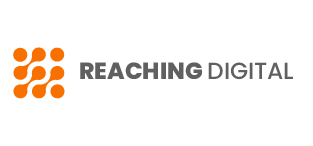
Home » Unique Motivation Letter For Art Residency: 09+ Templates
Unique Motivation Letter For Art Residency: 09+ Templates
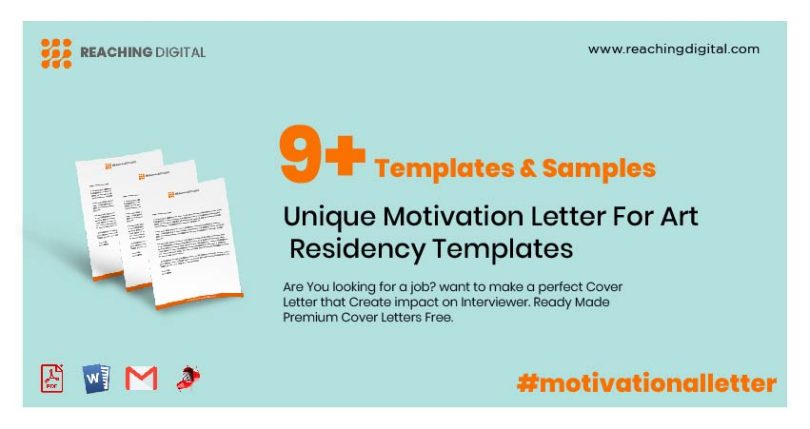
Embarking on an artistic journey requires more than just talent; it demands a compelling narrative that can open doors to prestigious art residencies. In this blog post, we’ll delve into the art of crafting a winning Motivation Letter For Art Residency, exploring key strategies and techniques to help artists stand out from the crowd and secure their dream opportunities.
Picture this: you’re on the brink of applying for that coveted art residency that promises a sanctuary for creativity and collaboration. Yet, amidst your palette of skills and portfolio of masterpieces, there lies a crucial element often overlooked—the motivation letter.
Fear not, fellow artist! Here, we’re not just penning words; we’re painting a vivid portrait of passion, purpose, and potential. From weaving personal anecdotes to showcasing artistic vision, let’s unlock the secrets to crafting a motivation letter that not only captivates but also cultivates opportunities.
As you embark on your journey to artistic greatness, remember that your motivation letter is your masterpiece—a reflection of your unique voice and vision. So, seize the canvas of words before you, infuse it with authenticity and ambition, and watch as it transforms into the key that unlocks the door to your artistic destiny. Are you ready to leave a lasting impression? Let’s dive in and craft motivational letters that resonate, inspire, and ultimately, elevate your artistic endeavors to new heights!
Table of Contents
Key Components of a Strong Motivation Letter For Art Residency
- Introduction: Begin with a captivating opening that hooks the reader and introduces yourself and your interest in the residency.
- Personal Background: Highlight relevant experiences, achievements, and artistic journey to showcase your passion and commitment.
- Artistic Vision: Clearly articulate your artistic goals, vision, and how the residency aligns with your creative aspirations.
- Connection to Residency: Demonstrate a deep understanding of the residency program, its values, and how you can contribute to its community.
- Conclusion: End with a strong closing that summarizes your enthusiasm, gratitude, and eagerness for the opportunity.
- Motivation Letter For PHD In Art History: [Free Templates]
- Catchy Artificial Intelligence Motivation Letter: 7+ Samples
- Unique Motivation Letter For PHD In Geology: 7+ Samples
Motivation Letter For Art Residency:
Best motivation letter for artist residency:, motivation letter for art residency example:.
- 08+ Professional MIT Motivation Letter Examples To Stand Out
- 13+ Catchy Harvard Motivation Letter Examples
- Creative Motivation Letter Example: 7+ Samples [Free]
Short Motivation Letter For Art Residency:
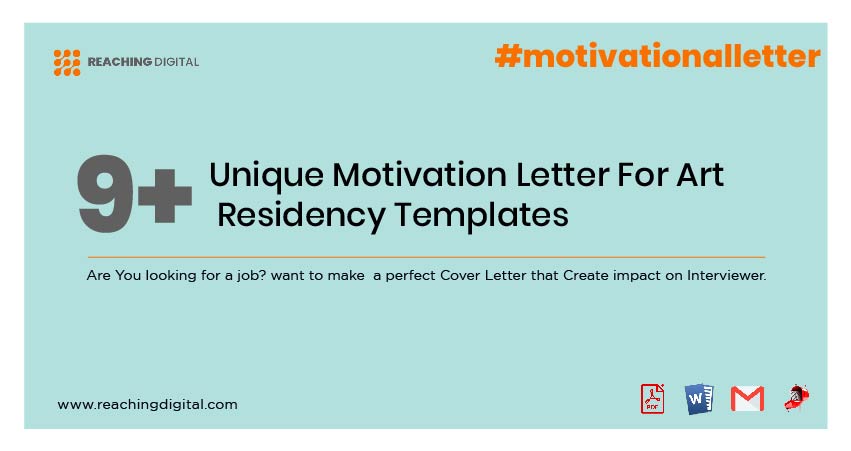
Sample Motivation Letter For Art Residency:
Motivation letter for art residency template:, best motivation letter for art residency:.
- Great Motivation Letter To An Embassy: 05+ Samples
- Great Motivation Letter For Social Media Manager: 07+ Examples
- Best Motivation Letter for Spontaneous Application: 7+ Ideas
Do’s And Don’t’s of writing an impactful Motivation Letter For Art Residency:
- Showcase Your Authentic Voice: Express your unique perspective, passion, and personality to captivate the reader.
- Highlight Relevant Experiences: Emphasize experiences, projects, and achievements that demonstrate your artistic journey and commitment.
- Tailor Each Letter: Customize your motivation letter for each residency, showing genuine interest and alignment with the program.
Don’ts:
- Avoid Generic Statements: Steer clear of clichés and generic language; instead, focus on genuine, specific details.
- Don’t Overwhelm with Details: Keep your letter concise and focused, avoiding unnecessary details that dilute your message.
- Don’t Forget to Proofread: Ensure your letter is free of typos and grammatical errors to convey professionalism and attention to detail.
Final Thoughts:
In the art world, where creativity reigns supreme, the motivation letter serves as your artistic manifesto—a canvas upon which you paint your aspirations, experiences, and dreams. Throughout this article, we’ve explored the essential elements of crafting a compelling motivation letter for an art residency. From showcasing your authentic voice highlighting relevant experiences and tailoring each letter to the specific opportunity at hand.
A well-crafted motivation letter is not just a formality; it’s your ticket to standing out in a sea of applicants and capturing the attention of potential employers or decision-makers. By showcasing your unique perspective, passion, and personality, you have the power to persuade and impress. Leaving a lasting impression that resonates long after the letter is read.
So, as you embark on your journey to secure your dream art residency, I encourage you to revisit your motivation letter with fresh eyes. Revise, refine, and tailor it to the specific program, ensuring that every word reflects your genuine interest and alignment with the opportunity. Remember, your motivation letter is more than just words on a page—it’s your opportunity to shine, to inspire, and to make your mark on the world of art. Seize it with confidence, and watch as your dreams become reality.
Now, armed with the insights and examples provided in this article, I urge you to take action. Revise your motivation letter. Infuse it with authenticity and passion, and send it forth into the world with the conviction that your talent and dedication deserve recognition. Your dream art residency awaits—go forth and claim it!
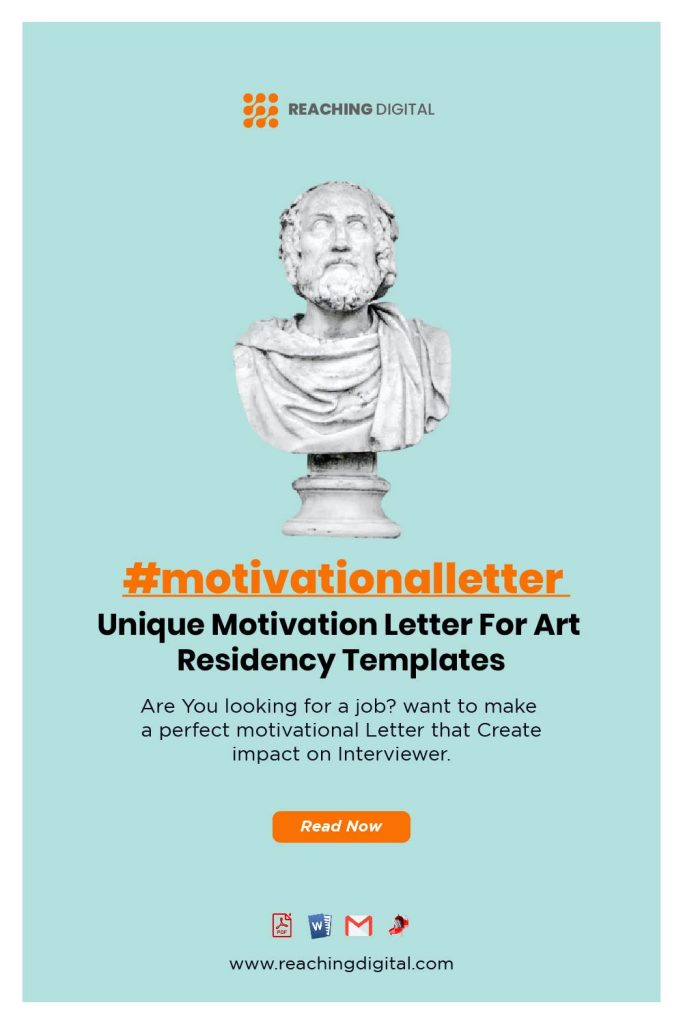
You may also like
The benefits of a motivational letter: examples and....

Motivation Letter For PHD In Electrical Engineering:...

Motivation Letter For PHD In Environmental Sciences:...

Motivational Letter For PHD In Civil Engineering : 7+...

Motivational Letter For PHD In Mechanical Engineering...

Motivation Letter For PHD In Anthropology: 7+ [Free...
About the author.
Jessica William
Leave a comment x.
Save my name, email, and website in this browser for the next time I comment.
Letter Templates
letter of intent for artist residency sample

Looking to apply for an artist residency? One of the most important documents you will need to submit is a letter of intent. This letter should communicate your goals, experience, and why you believe the residency is a good fit for you. In this article, we will provide you with examples of letter of intent for artist residency samples, tips to help you craft your own letter, and frequently asked questions about the application process.
A letter of intent for artist residency sample is a document that outlines your interest in applying for a residency program. This letter should demonstrate your passion for your craft, your experience, and your goals for the program. It is important to tailor your letter to each residency program you apply to, as each program may have different requirements.
When you are applying for an artist residency, you will likely be asked to submit a letter of intent along with your application. This letter is an opportunity for you to introduce yourself to the selection committee and explain why you are interested in the residency program. Your letter should be clear, concise, and professional.
Remember to keep your letter focused on your goals as an artist and how the residency program will help you achieve these goals. Be sure to mention any relevant experience you have, such as exhibitions, publications, or awards. You may also want to discuss any specific projects you are working on or ideas you have for new work.
Readers can find examples of letter of intent for artist residency samples online and edit them as needed. However, it is important to ensure that your letter is unique and tailored to the specific residency program you are applying to.
Artist Residency Program at XYZ University
Dear Selection Committee,
I am writing to express my interest in the artist residency program at XYZ University. As an emerging artist, I am eager to have the opportunity to work in a collaborative environment and learn from other artists.
In my current work, I explore themes of identity and belonging through mixed media installations. I believe that the residency program at XYZ University will allow me to further develop my practice and explore new techniques and mediums.
Thank you for your consideration.
Artist Residency Program at ABC Gallery
Dear Residency Selection Committee,
I am writing to apply for the artist residency program at ABC Gallery. As an emerging artist, I am excited by the prospect of working in a new environment and being inspired by other artists.
In my current work, I focus on themes of memory and nostalgia through painting and drawing. I believe that the residency program at ABC Gallery will provide me with the opportunity to expand my practice and experiment with new techniques and materials.
Thank you for considering my application.
Best regards,
Artist Residency Program at DEF Institute
Dear Residency Committee,
I am writing to express my interest in the artist residency program at DEF Institute. As a multi-disciplinary artist, I am excited by the prospect of working in a collaborative environment with other artists from diverse backgrounds.
In my current work, I explore themes of social justice and identity through performance art and installation. I believe that the residency program at DEF Institute will provide me with the space and resources to further develop my practice and engage with local communities.
Jessica Lee
Artist Residency Program at GHI Center
I am writing to apply for the artist residency program at GHI Center. As an emerging artist, I am eager to have the opportunity to work in a supportive environment and expand my skills and knowledge.
In my current work, I create large-scale installations that explore themes of ecology and sustainability. I believe that the residency program at GHI Center will provide me with the time and space to further develop my ideas and experiment with new materials and techniques.
Alexandra Kim

Artist Residency Program at JKL Institute
I am writing to express my interest in the artist residency program at JKL Institute. As a multidisciplinary artist, I am excited about the opportunity to work in a diverse community and engage with other artists from different backgrounds.
In my current work, I use mixed media to explore themes of memory, loss, and identity. I believe that the residency program at JKL Institute will provide me with the time, space, and resources to further develop my practice and experiment with new techniques and materials.
Artist Residency Program at MNO Center
I am writing to apply for the artist residency program at MNO Center. As an emerging artist, I am eager to have the opportunity to work in a supportive environment and connect with other artists.
In my current work, I explore themes of migration, displacement, and identity through photography and mixed media. I believe that the residency program at MNO Center will provide me with the time and space to develop my ideas and experiment with new techniques and approaches to my work.
Yara Rodriguez
How to Write a Successful Letter of Intent for Artist Residency Sample
Here are some tips to help you craft a strong letter of intent:
- Research the residency program and tailor your letter to their specific requirements and goals.
- Introduce yourself and your work in a compelling way.
- Explain how the residency program will help you achieve your artistic goals.
- Discuss any relevant experience you have and how it has prepared you for this opportunity.
- Show enthusiasm and passion for your work and the residency program.
- Proofread your letter carefully to avoid errors or typos.
Frequently Asked Questions
What should i include in my letter of intent.
Your letter of intent should include an introduction, an explanation of your goals and experience, and a closing. Be sure to tailor your letter to the specific residency program you are applying to and highlight any relevant experience or projects.
How long should my letter of intent be?
Your letter of intent should be concise and focused. Aim for around 40 to 50 sentences, or two to three paragraphs.
How should I address my letter of intent?
You should address your letter to the selection committee or residency program director. If their name is not provided, you can address it to “Residency Selection Committee” or “Residency Program Director.”
What should I do if I don’t have a lot of experience?
Even if you are an emerging artist with limited experience, you can still write a strong letter of intent. Focus on how the residency program will help you develop your skills and advance your career goals.
What kind of tone should I use in my letter of intent?
Your letter of intent should be professional and focused, but it should also convey your enthusiasm and passion for your work. Use a formal, friendly tone of voice and avoid using overly complex language.
When should I submit my letter of intent?
Be sure to check the residency program’s website or application guidelines for submission deadlines. Aim to submit your letter of intent well before the deadline to ensure that it is reviewed in a timely manner.
A letter of intent for artist residency sample is an important part of your application package. By following these tips and examples, you can create a strong letter that highlights your experience, goals, and passion for your craft. Remember to tailor your letter to each residency program you apply to and give yourself plenty of time to craft a compelling message.
- sample letter of intent for permanent residency
- sample letter of intent for regional center
- letter of intent sample for doctors
- sample letter of intent for dentist
- sample letter of intent for art exhibition
- sample letter of intent for medical fellowship
Professional Artist Cover Letter Example
Cover letter examples, cover letter guidelines, how to format an professional artist cover letter, cover letter header, cover letter header examples for professional artist, how to make your cover letter header stand out:, cover letter greeting, cover letter greeting examples for professional artist, best cover letter greetings:, cover letter introduction, cover letter intro examples for professional artist, how to make your cover letter intro stand out:, cover letter body, cover letter body examples for professional artist, how to make your cover letter body stand out:, cover letter closing, cover letter closing paragraph examples for professional artist, how to close your cover letter in a memorable way:, pair your cover letter with a foundational resume, key cover letter faqs for professional artist.
Start your Professional Artist cover letter by addressing the recipient by name, if possible. If not, use a general greeting like "Dear Hiring Manager". Then, introduce yourself and state the position you're applying for. Mention where you found the job posting or who referred you. In the first paragraph, briefly highlight your most significant achievements or experiences that make you a strong candidate for the role. Remember to make it specific to the role and the organization. For instance, if you're applying for a graphic design role, you might start with "As a seasoned graphic artist with over 10 years of experience in creating compelling visuals for renowned brands, I am excited to apply for the Graphic Designer position at your esteemed organization." This not only showcases your experience but also your enthusiasm for the role.
The best way for Professional Artists to end a cover letter is by expressing gratitude for the opportunity and enthusiasm for potential next steps. For example, "Thank you for considering my application. I am excited about the possibility of contributing my unique artistic perspective to your team and would welcome the opportunity to discuss my qualifications further." This ending is polite, professional, and shows eagerness to move forward in the process. It's also important to include your contact information after your closing remarks, even if it's already on your resume. This makes it easy for the recipient to reach out to you. Finally, close with a professional sign-off like "Sincerely" or "Best regards," followed by your full name.
Professional Artists should include the following elements in their cover letter: 1. Personal Information: Start with your name, address, contact number, and email address. This information should be at the top of the letter. 2. Salutation: Address the recipient by their name if it's known. If not, use a general greeting like "Dear Hiring Manager." 3. Introduction: Begin with a brief introduction about yourself and your artistry. Mention the role you're applying for and where you found the job listing. 4. Body: This is where you sell your skills and experiences. Discuss your artistic style, the mediums you work with, and any significant projects or exhibitions you've been a part of. Highlight any awards or recognitions you've received. If you're applying for a specific project, explain why you're interested and how your skills and style align with the project's needs. 5. Skills and Qualifications: List any relevant skills and qualifications you have. This could include technical skills like proficiency in certain art software, or soft skills like creativity and attention to detail. 6. Portfolio: Mention that you've included a portfolio of your work, or provide a link to your online portfolio. This gives the recipient a chance to see your work firsthand. 7. Conclusion: Wrap up the letter by thanking the recipient for their time and expressing your interest in the opportunity to discuss your application further. 8. Signature: End with your name and a professional closing like "Sincerely" or "Best." Remember, a cover letter is your chance to show your passion and personality. It should complement your resume, not just repeat it. Tailor it to each job you apply for, highlighting the most relevant experiences and skills. Be professional, but don't be afraid to let your unique artist's perspective shine through.
Related Cover Letters for Professional Artist
Fine artist cover letter.

Freelance Artist Cover Letter

Visual Artist Cover Letter

Concept Artist Cover Letter

Digital Artist Cover Letter

Storyboard Artist Cover Letter

Content Creator Cover Letter

Multimedia Journalist Cover Letter

Related Resumes for Professional Artist
Fine artist resume example.

Freelance Artist Resume Example
Visual artist resume example, concept artist resume example, digital artist resume example, storyboard artist resume example, content creator resume example.

Multimedia Journalist Resume Example

Try our AI Cover Letter Generator


- Job & Career

How To Write A Killer Application For An Art Residency
An art residency is a program that provides artists with dedicated time and space to work on their creative projects. These programs can be found all over the world and can range in duration from a few weeks to several months or even a year. Writing a successful application for an artist residency can be a daunting process. It requires careful attention to detail and a strong presentation of your artistic vision and goals. Here are 8 tips to help you write a successful application!
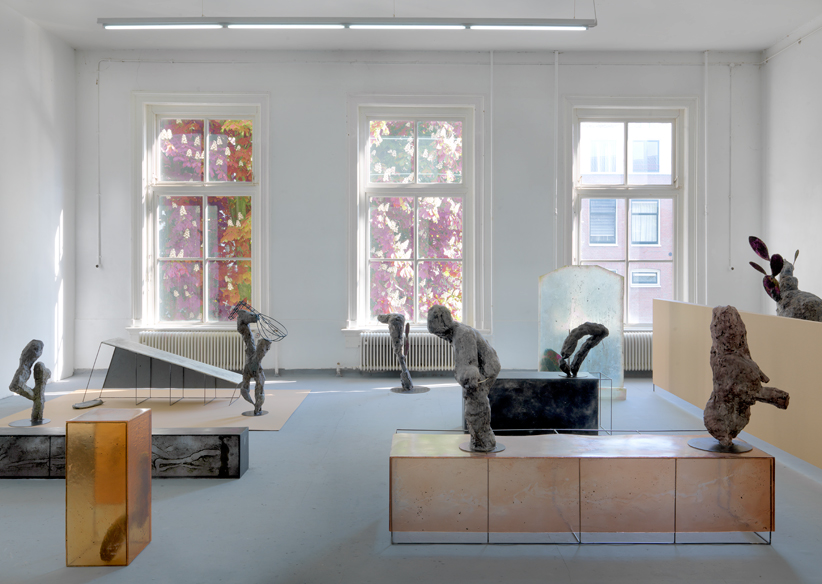
Research the residency Before you begin your application, research the residency you are interested in. Make sure it aligns with your artistic goals and the type of work you want to create.
Understand the application requirements Make sure you understand the requirements for the application. This includes the application form, artist statement, work samples, and other materials that may be required.
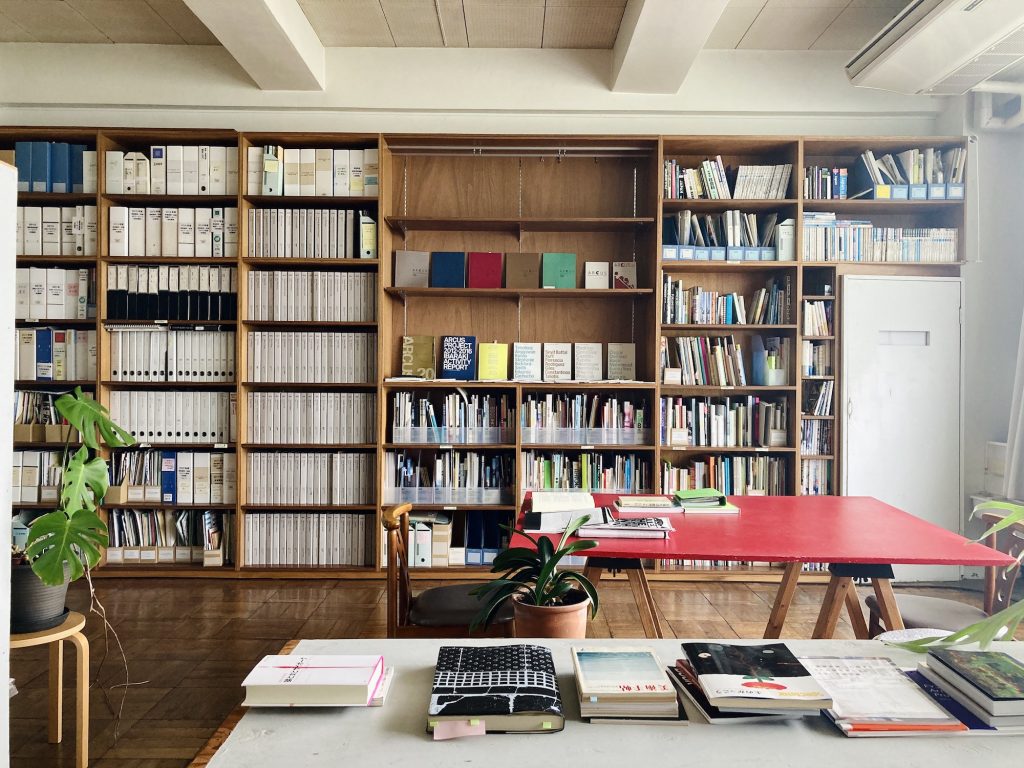
Craft a strong artist statement Your artist statement should be clear and concise and should explain your artistic vision, goals, and the type of work you want to create during the residency. Make sure to focus on the unique qualities of your work and what sets you apart from other artists.
Choose your work samples carefully Select work samples that demonstrate your range of skills and artistic abilities. Make sure the samples are high-quality and showcase your best work.

Provide a strong proposal Your proposal should explain how you plan to use the residency to further your artistic goals. Be specific about the type of work you want to create and how the residency will help you achieve yours and also their vision.
Show enthusiasm and commitment Residencies are often competitive, so it’s important to show enthusiasm and commitment to your work. Be passionate about your art and show that you are dedicated to using the residency to further your artistic goals.

Edit and proofread Before submitting your application, make sure to edit and proofread your materials. Check for spelling and grammatical errors, and make sure all of the required materials are included. When in doubt always ask a family member or friend to look over your application.
Make sure your social media/website is up to scratch And finally, make sure your website and public social media channels showcasing your work are fresh and presentable. Residencies will want to know how you can market their platform too and become a representative of their ‘brand’.
You May Also Like

LATEST JOBS

Artist Cover Letter Example (Free Guide)
Create an artist cover letter that lands you the interview with our free examples and writing tips. use and customize our template and land an interview today..
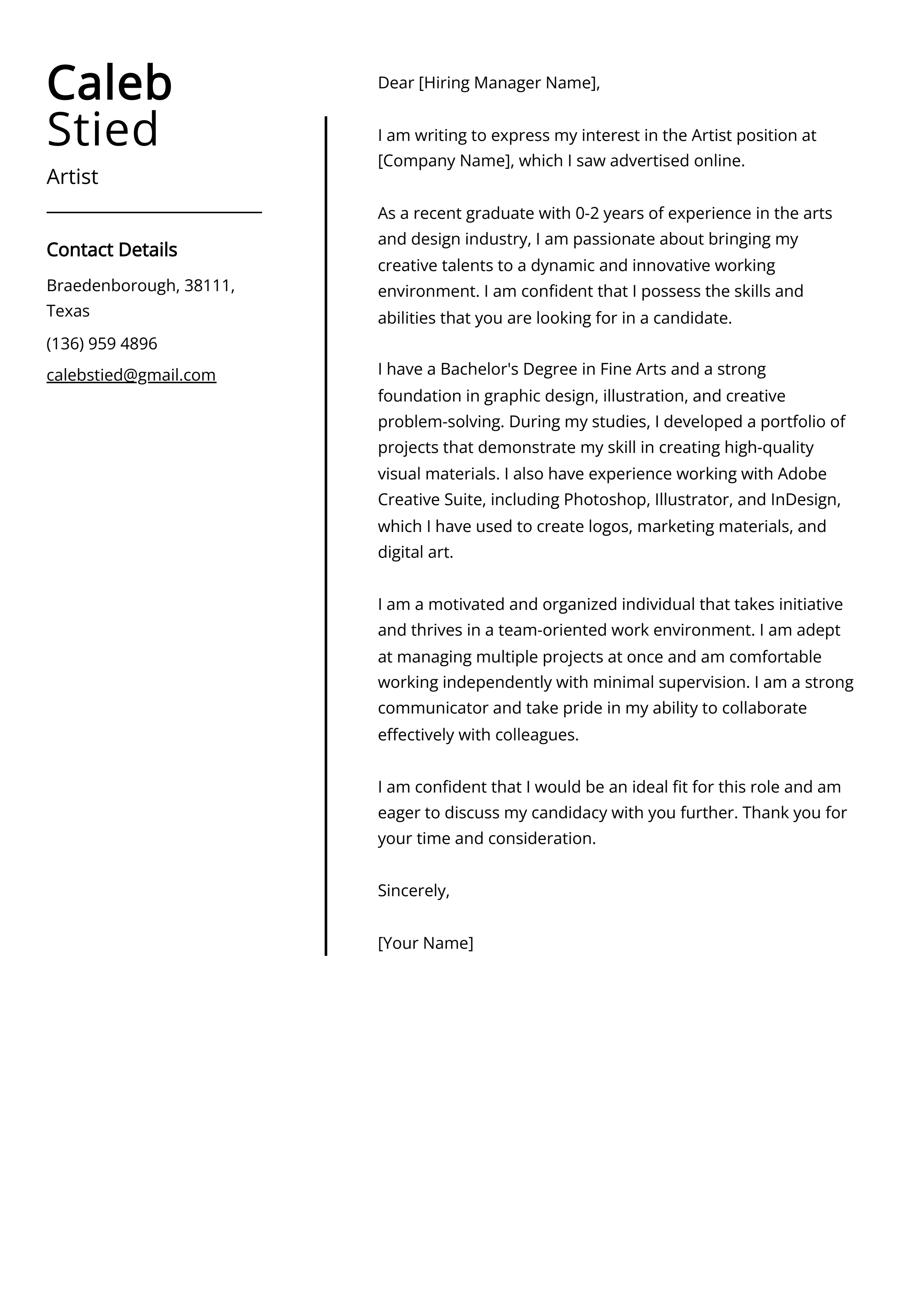
We all know how hard it is to stand out in the job application process. Cover letters provide an opportunity to highlight your artistic talents and make a great first impression on employers. Our Artist Cover Letter Guide will help you create a captivating cover letter that will ensure your creative skills and qualifications are noticed. Whether you're an experienced artist or just starting out, you'll find the tips and tricks in this guide invaluable.
We will cover:
- How to write a cover letter, no matter your industry or job title.
- What to put on a cover letter to stand out.
- The top skills employers from every industry want to see.
- How to build a cover letter fast with our professional Cover Letter Builder .
- What a cover letter template is, and why you should use it.
Related Cover Letter Examples
- Ui Developer Cover Letter Sample
- User Experience Designer Cover Letter Sample
- Ux Developer Cover Letter Sample
- Web Designer Cover Letter Sample
- Videographer Cover Letter Sample
Artist Cover Letter Sample
- Designer Cover Letter Sample
Dear [Hiring Manager],
I am writing to apply for the Artist position at [Company Name]. I am confident that my skills and experience will make me the ideal candidate for this role.
My name is [Name] and I am an experienced artist with a Bachelor of Arts in Fine Arts from [School Name]. I have been professionally drawing, painting, and sculpting for over [XX] years. During this time, I have developed a strong portfolio of work, which has been featured in galleries, museums, and private collections.
I am highly experienced in a variety of art forms, including painting, drawing, sculpting, printmaking, and mixed media. I also have expertise in 3D modeling and computer-aided design (CAD). I have a deep understanding of color theory, composition, and lighting. I am adept at using a range of tools, materials, and techniques to create art, and I am passionate about experimenting with new ideas and approaches.
I am a skilled collaborator, and I enjoy working with other artists, designers, and technicians to create unique and powerful works of art. I am also comfortable working independently and have the ability to produce artwork to a high standard with minimal supervision.
I am confident that I would be a great asset to the team at [Company Name]. I am eager to share my knowledge and experience with others, and I am committed to creating innovative and inspiring works of art. Please find a selection of my work enclosed.
I look forward to hearing from you and thank you for your consideration.
Sincerely, [Your Name]
Why Do you Need a Artist Cover Letter?
- A good artist cover letter is essential for getting your application noticed by potential employers.
- It allows you to introduce yourself and your work, showcase your skills, and explain why you are the best candidate for the job.
- It is a great way to make a strong first impression and stand out from other applicants.
- Your cover letter can also highlight your accomplishments, demonstrate your commitment to the job, and make the hiring manager aware of any special qualifications you possess.
- By providing a professional and effective cover letter, you can increase your chances of getting an interview and landing the job.
A Few Important Rules To Keep In Mind
- Keep the cover letter concise and to the point, no more than one page.
- Start off by introducing yourself and your art, as well as your goals and objectives related to the position.
- Outline your creative history and how it relates to the position you are applying for.
- Include relevant skills and experience that you have obtained that you believe make you an ideal candidate.
- Be sure to include any awards, recognitions, or accolades you have received.
- Discuss any works or projects you have created that are relevant to the position.
- Explain why you are passionate about the job and why you are the perfect candidate for the position.
- End the letter by thanking the reader for their time and consideration.
What's The Best Structure For Artist Cover Letters?
After creating an impressive Artist resume , the next step is crafting a compelling cover letter to accompany your job applications. It's essential to remember that your cover letter should maintain a formal tone and follow a recommended structure. But what exactly does this structure entail, and what key elements should be included in a Artist cover letter? Let's explore the guidelines and components that will make your cover letter stand out.
Key Components For Artist Cover Letters:
- Your contact information, including the date of writing
- The recipient's details, such as the company's name and the name of the addressee
- A professional greeting or salutation, like "Dear Mr. Levi,"
- An attention-grabbing opening statement to captivate the reader's interest
- A concise paragraph explaining why you are an excellent fit for the role
- Another paragraph highlighting why the position aligns with your career goals and aspirations
- A closing statement that reinforces your enthusiasm and suitability for the role
- A complimentary closing, such as "Regards" or "Sincerely," followed by your name
- An optional postscript (P.S.) to add a brief, impactful note or mention any additional relevant information.
Cover Letter Header
A header in a cover letter should typically include the following information:
- Your Full Name: Begin with your first and last name, written in a clear and legible format.
- Contact Information: Include your phone number, email address, and optionally, your mailing address. Providing multiple methods of contact ensures that the hiring manager can reach you easily.
- Date: Add the date on which you are writing the cover letter. This helps establish the timeline of your application.
It's important to place the header at the top of the cover letter, aligning it to the left or center of the page. This ensures that the reader can quickly identify your contact details and know when the cover letter was written.
Cover Letter Greeting / Salutation
A greeting in a cover letter should contain the following elements:
- Personalized Salutation: Address the hiring manager or the specific recipient of the cover letter by their name. If the name is not mentioned in the job posting or you are unsure about the recipient's name, it's acceptable to use a general salutation such as "Dear Hiring Manager" or "Dear [Company Name] Recruiting Team."
- Professional Tone: Maintain a formal and respectful tone throughout the greeting. Avoid using overly casual language or informal expressions.
- Correct Spelling and Title: Double-check the spelling of the recipient's name and ensure that you use the appropriate title (e.g., Mr., Ms., Dr., or Professor) if applicable. This shows attention to detail and professionalism.
For example, a suitable greeting could be "Dear Ms. Johnson," or "Dear Hiring Manager," depending on the information available. It's important to tailor the greeting to the specific recipient to create a personalized and professional tone for your cover letter.
Cover Letter Introduction
An introduction for a cover letter should capture the reader's attention and provide a brief overview of your background and interest in the position. Here's how an effective introduction should look:
- Opening Statement: Start with a strong opening sentence that immediately grabs the reader's attention. Consider mentioning your enthusiasm for the job opportunity or any specific aspect of the company or organization that sparked your interest.
- Brief Introduction: Provide a concise introduction of yourself and mention the specific position you are applying for. Include any relevant background information, such as your current role, educational background, or notable achievements that are directly related to the position.
- Connection to the Company: Demonstrate your knowledge of the company or organization and establish a connection between your skills and experiences with their mission, values, or industry. Showcasing your understanding and alignment with their goals helps to emphasize your fit for the role.
- Engaging Hook: Consider including a compelling sentence or two that highlights your unique selling points or key qualifications that make you stand out from other candidates. This can be a specific accomplishment, a relevant skill, or an experience that demonstrates your value as a potential employee.
- Transition to the Body: Conclude the introduction by smoothly transitioning to the main body of the cover letter, where you will provide more detailed information about your qualifications, experiences, and how they align with the requirements of the position.
By following these guidelines, your cover letter introduction will make a strong first impression and set the stage for the rest of your application.
Cover Letter Body
As an experienced and passionate Artist, I am excited to apply for the position of Artist at [Company Name]. I believe I have the experience and skillset to be a great fit for your team.
I have been working as an Artist for over five years. During this time, I have developed a strong understanding of design principles and a passion for creating beautiful and effective art. I have experience with a wide variety of mediums, including painting, drawing, digital art, and photography. I also have a knack for problem-solving and finding creative solutions to difficult challenges.
I am detail-oriented and highly organized, and I understand the importance of meeting deadlines and staying within budget. I also have excellent communication skills and can work well with clients and other team members. I am a team player and always strive to create the best possible results.
I am confident that I can be an asset to your team, and I am excited to discuss my qualifications in more detail. Please find my resume attached. Thank you for your consideration.
- Experience with a wide variety of mediums, including painting, drawing, digital art, and photography
- Strong understanding of design principles
- Excellent problem-solving and creative skills
- Able to meet deadlines and stay within budget
- Excellent communication and team building skills
I am confident that I could be a great asset to your team and I am looking forward to the opportunity to discuss my qualifications in more detail. Thank you for your time and consideration.
Complimentary Close
The conclusion and signature of a cover letter provide a final opportunity to leave a positive impression and invite further action. Here's how the conclusion and signature of a cover letter should look:
- Summary of Interest: In the conclusion paragraph, summarize your interest in the position and reiterate your enthusiasm for the opportunity to contribute to the organization or school. Emphasize the value you can bring to the role and briefly mention your key qualifications or unique selling points.
- Appreciation and Gratitude: Express appreciation for the reader's time and consideration in reviewing your application. Thank them for the opportunity to be considered for the position and acknowledge any additional materials or documents you have included, such as references or a portfolio.
- Call to Action: Conclude the cover letter with a clear call to action. Indicate your availability for an interview or express your interest in discussing the opportunity further. Encourage the reader to contact you to schedule a meeting or provide any additional information they may require.
- Complimentary Closing: Choose a professional and appropriate complimentary closing to end your cover letter, such as "Sincerely," "Best Regards," or "Thank you." Ensure the closing reflects the overall tone and formality of the letter.
- Signature: Below the complimentary closing, leave space for your handwritten signature. Sign your name in ink using a legible and professional style. If you are submitting a digital or typed cover letter, you can simply type your full name.
- Typed Name: Beneath your signature, type your full name in a clear and readable font. This allows for easy identification and ensures clarity in case the handwritten signature is not clear.
Common Mistakes to Avoid When Writing an Artist Cover Letter
When crafting a cover letter, it's essential to present yourself in the best possible light to potential employers. However, there are common mistakes that can hinder your chances of making a strong impression. By being aware of these pitfalls and avoiding them, you can ensure that your cover letter effectively highlights your qualifications and stands out from the competition. In this article, we will explore some of the most common mistakes to avoid when writing a cover letter, providing you with valuable insights and practical tips to help you create a compelling and impactful introduction that captures the attention of hiring managers. Whether you're a seasoned professional or just starting your career journey, understanding these mistakes will greatly enhance your chances of success in the job application process. So, let's dive in and discover how to steer clear of these common missteps and create a standout cover letter that gets you noticed by potential employers.
- Not addressing the letter to a specific person.
- Not customizing the letter to the job opportunity.
- Not making the letter easy to read and understand.
- Including irrelevant information.
- Focusing too much on yourself and not enough on how you can help the employer.
- Making spelling and grammar mistakes.
- Using overly formal language.
- Not providing contact information.
- Not proofreading the letter.
- Not following directions.
Key Takeaways For an Artist Cover Letter
- Highlight any relevant experience or training you have in the field of art.
- Describe your style of art, why it is unique, and what sets it apart from other artists.
- Include any awards or recognition you have received for your artwork.
- Express your enthusiasm and passion for art and the creative process.
- Demonstrate an understanding of the gallery or venue you are applying to.
- Be sure to proofread the letter and double-check for errors.

How to Apply for Artist Residencies, Grants, and More Creative Opportunities

Courtesy of Summit AIR in Eden, Utah.
For years, Katrina Neumann, Sebastien Sanz de Santamaria, and Kira Simon-Kennedy have been dedicated to helping artists find opportunities to support their practices . As they launch Rivet , an online search engine for creative opportunities, we share their guide to navigating the application process.
This guide was designed to help you tackle the daunting process of applying for artist residencies, grants, fellowships, incubators, awards, labs, prizes, and programs of all kinds that provide time, space, and support for creative people to develop their work. The goal is to provide you with the skills and knowledge to grow and thrive, and most importantly, to help you make the work you’re passionate about.
1. Do your research
The best place to start isn’t a search engine; it’s actually with people who inspire you.
Reverse engineer a list of opportunities by going to the website of someone you admire and finding their CV, resume, or bio. What was the first thing they did? If they’re a visual artist, what galleries or spaces showed their work first? If they’re a filmmaker or writer, what festivals featured their work? Then, find their peers, and do the same. Keep going down rabbit holes, tracing the paths of the people you look up to.
For a broader search, check out listing sites and opportunity networks. There are too many niche platforms to list, but here’s a spreadsheet to get started. Be warned, many of these platforms can be overwhelming, difficult to search through, and may be infrequently updated (which is why we’re building Rivet!).
2. Make sure you can do it
Once you’ve made a list of things you’d like to apply for, and before diving into an application, make sure you’re qualified.
Sometimes opportunities are limited to people with certain passports, of a certain age or career stage, languages, or any number of other criteria. If you’re not quite sure if you qualify, it is always best to read the application thoroughly, and then email or call and ask any lingering questions before applying.
Then, gauge if this opportunity is feasible for you. Some may require a part-time or full-time commitment that can’t always be balanced with other responsibilities. And unfortunately, not all opportunities are affordable. Some have application or submission fees, participation fees, and many don’t cover living expenses, travel, food, housing, or materials. Sometimes, it’s possible to apply for other funding or find other ways to subsidize costs, but it’s important to take into consideration the additional effort.

Johann Diedrick helps his students build their mobile listening kits at Social Kitchen in Kyoto, Japan.
3. Make sure it’s worth it
Beyond costs, there are plenty of other reasons an opportunity may not be worth it. Some might not provide the kind of support, resources, network, exposure, or space to experiment that you what you need at this particular moment. Some might surround you with too many (or not enough) people or distractions. The best way to learn is by looking up past participants and try to find interviews where they speak about their time at the residency, check reviews on Rate My Artist Residency , or get in touch with them directly.
Ask yourself questions like, how would you like to spend your time? What would you need, in terms of equipment, language skills, or project assistance? Would it suit your lifestyle?
Think about your level of comfort. Can you rough it? Opportunities vary from farm houses with intermittent electricity to luxury hotels with continental breakfasts. Check a map and use Google Street View to get a sense of the environment.
Also consider the social environment. If you’re looking for solitude, find a place that works with less than three people at any given time to avoid constantly turning down invitations to group activities.
4. Don’t miss the deadline
When you find the perfect opportunity, set up a calendar reminder a week before the deadline, and another one the day before. Don’t forget that time zones matter!
5. Make sure that your work looks good
Does this application ask you to submit a link to your website, a portfolio of images, or your social media profiles? Now is a good time to make updates, take new photographs of your work, and make sure all your online identities are presenting you the way you’d like to be seen.
6. Read the application closely
Before you start filling out answers, read every single question on the application carefully. Copy and paste all the questions into a document that auto-saves (like a Google Doc or an email draft).
It’s good to cast a wide net, but if you’re applying to several things at once, make sure you don’t use the exact same application for everything. Tailor each proposal to address the organization’s mission.

Courtesy of Crosstown Arts in Memphis, Tennessee.
7. Be concise, clear, sharp, and interesting
Every time you apply, you are asking someone to read what you wrote. Be kind to your readers. They might be looking at hundreds, or thousands of proposals, so go easy on the artspeak and jargon and get right to the point. And remember, you don’t have reach the word limit for every question. Try to convey your ideas with fewer words, avoid repeating yourself, and don’t be vague.
8. Draft, get feedback, revise, review, and then submit!
Once your draft feels close to complete, send it to a trusted friend or two to edit. They’ll be able to point out where you can clarify, refine, or re-write to best represent your ideas in a way that will make sense to the strangers who will be reviewing applications. After getting feedback, do one final pass, double check for typos and run-on sentences, then send it in.
Your proposal will now be considered by a person or group of people who care deeply and probably started from where you are now. While you wait to hear back, carry on with life as usual, but keep an eye on your inbox and voicemails.
9. Don’t get discouraged by rejection
If you receive an acceptance letter, congrats! Plan ahead if that’s your style, research who you’d like to meet, where you’d like to go, and lay out a work plan for your project. You did good, keep at it!
If you get a rejection letter (sorry, they suck, they really do), the first thing is to ask if you can know specifically what you could have done better. You can also ask if the decision-makers can recommend other opportunities for you to apply for that might be better suited. And always ask if you should apply again next year.
Look closely at who they did select, and run the reverse-engineering search on them. And then keep trying! Often, success begets success — try for small, local grants from young organizations and grow with them.
And remember, you can always start your own thing. Collectives can pool resources to support informal residencies and there’s a wide world of opportunities beyond what you can officially apply for! For more information, visit Rivet’s Guide to Applying for Things .

- Vertical The Example Article Title Longer Than The Line By Example Name Jan 1, 1970

Explore Jobs
- Jobs Near Me
- Remote Jobs
- Full Time Jobs
- Part Time Jobs
- Entry Level Jobs
- Work From Home Jobs
Find Specific Jobs
- $15 Per Hour Jobs
- $20 Per Hour Jobs
- Hiring Immediately Jobs
- High School Jobs
- H1b Visa Jobs
Explore Careers
- Business And Financial
- Architecture And Engineering
- Computer And Mathematical
Explore Professions
- What They Do
- Certifications
- Demographics
Best Companies
- Health Care
- Fortune 500
Explore Companies
- CEO And Executies
- Resume Builder
- Career Advice
- Explore Majors
- Questions And Answers
- Interview Questions
How To Write A Cover Letter For A Job In 2023 (With Examples)
- How To Write A Cover Letter
- When Is A Cover Letter Necessary
- Free Cover Letter Templates
- Cover Letter Mistakes To Avoid
- Cover Letter Tips
- How To Sell Yourself In A Cover Letter
Find a Job You Really Want In
Cover letters aren’t required with every application, but the majority of managers pay more attention to a candidate who includes a cover letter. This is especially so if you make an effort to tailor your letter to the specific position. It’s important not to just change the names and job positions, but also to show how your professional experience fits with the job.
A good cover letter greatly increases your chance of getting an interview. If you’re looking to write a cover letter, rework a letter that you have, or just want to know what’s involved in the job application process, then keep reading.
Key Takeaways:
A cover letter should be a maximum of one page long, with three to five paragraphs.
Before writing your cover letter, it’s important to reread the job description and include keywords from it.
Do research to figure out who you are addressing, and make sure to keep your greeting gender neutral if you don’t know.
Tailoring your resume to each job can help you stand out from other candidates.

What is a cover letter?
Why cover letters are important, how to write a cover letter, cover letter examples, cover letter template, do’s and don’ts in a cover letter, cover letter faq, expert opinion.
- Sign Up For More Advice and Jobs
A cover letter is a one-page document that describes your professional background, fitness for the role, and interest in the company. Cover letters are a way of introducing yourself to hiring managers in a more engaging way than resumes can.
While your resume spells out the “who, what, where, when” of your relevant experience, a cover letter fills in the “why” and “how.” A good cover letter not only expands on your resume’s accomplishments but also highlights the soft skills that make you an excellent person to work alongside.
While there are no official formatting guidelines for cover letters, hiring managers and recruiters do have certain expectations regarding structure, length, and content.
Writing a good cover letter is important because it is your chance to stand out from other potential candidates. Showing your personality while also matching the tone of the company will help recruiters to visualize how you could fit into the role.
Simply submitting a cover letter isn’t enough though. Each cover letter you write should be specifically tailored to the job you’re applying for (just like resumes). It’s essential that you show the reader that you’ve done your homework and understand exactly what function you’d be serving if hired. You do that by providing examples of past work experiences that directly relate to the responsibilities of the new job.
Cover letters are inherently unique based on who’s writing them and for what position. However, as a cover letter is a business letter, it has an expected format that it should follow. This is important because you want the hiring manager to be able to look over your cover letter quickly and understand your qualifications and interest in the position.
Here’s the standard way that a cover letter should be formatted and what to include:
The header. The header of your letter is where you should input all of the contact information for yourself and the hiring manager . Do you best to address it directly to the person who’ll be reading the letter — typically either the hiring manager or HR manager.
Traditionally, you should include both your name and address and the employer’s name and address. However, as the majority of applications are online, the employer’s address is often omitted. But a traditional cover letter’s heading would look like this:
Page Roman 444 Frog Rd. Marigold, TX, 10987 August 27th, 2021 Chris Morgan Marketing Manager New Media Company 833 Rune Rd. Marigold, TX, 10987
If you’re emailing your cover letter, you can simply include your name, telephone number, email address, and fewer address details (just your city and state will suffice). You can also include a zip code if you live in a big city with multiple zip codes.
Jessica Dancer jessica. dancer @email.email | (555)-444-3333 | Colombus, OH 43110
Be sure to use a professional-sounding email address that’s not associated with your current or past employer. It’s disrespectful to both your current employer and the company you’re applying to, and will likely hurt your chances of being invited for an interview.
The greeting or salutation. Traditionally, the best salutation would be to use Dear Mr./Ms. [Last Name]. Make sure that you know the person’s gender when doing this, however, as you don’t want to misgender the hiring manager. Using “Dear [First Name] [Last Name]” is becoming more popular for this reason, patriotically among younger workers.
Dear Mr. Morgan, Dear Mrs. Smith Dear Ms. Conner
Avoid using generic greetings such as “To whom it may concern” as it’ll look like you didn’t bother to personalize the letter (even if you did.) That particular phrase has become somewhat controversial as well, so if you need to put a generic address — if you can’t find the hiring manager’s name, for instance — use something else, such as:
Dear Hiring Manager Dear [Department] Manager Dear [Title of the Person You’d Report to if Hired] Dear [Department] Hiring Team
Opening paragraph. The opening of your professional cover letter should instantly grab the attention of your reader . Try to lead off with one of your most relevant and impressive accomplishments.
Open strong . Open with a statement other than your name or stating your interest in the position. Lead with an interesting experience or achievement that directly relates to the new position.
Convey your personal value. There are always other qualified applicants with similar skills, so it is key to express why you personally would bring value to the organization. Give specific details as to the value you brought in a previous position, and how that could transfer to the new role.
Show your enthusiasm. Recruiters want to hire candidates who are excited about the position. Express enthusiasm and convey why you are passionate about the role. This is another opportunity to share a quick personal anecdote related to the job.
Keep it short. All of these points in your opening paragraph shouldn’t be more than a sentence or two each. You don’t want your introduction to be too long, as you want the reader to be able to quickly go through your cover letter.
As a Content Writer with a passion for travel and literature, I was thrilled to see the Senior Content Writer position open up at BookFly. My past experience driving organic traffic by 23% YoY to the travel website, XTravel, would translate perfectly into the position’s stated goals from the job description.
First body paragraph. Here is where you should really sell yourself across several areas. Showcase how your personality traits, such as being honest or having the ability to work under pressure, make you a good fit.
Emphasize transferable skills. Explain how the skills you’ve cultivated make you the perfect fit for the role. This can include collaborative work you’ve done in the past, a leadership role you had that drove results, or interpersonal skills.
Revisit the job description. Make sure to pull relevant skills from the job description and put them in your cover letter. If the hiring manager spent the time to list those skills, they’re going to be looking for candidates that have them.
It also helps with applicant tracking systems that may sift through cover letters looking for keywords.
Don’t skimp on personality traits. These are especially important if you don’t have a lot of experience. Desirable skills such as ambition, dedication, and getting work done on time are good for both entry-level positions and if you’re making a career change.
I have a passion for content creation and a deep understanding of the content cycle, from ideation to promotion. My years in the digital publishing world have crafted my ability to drive killer CTR and resonate with an audience. Not only did CTR jump by 2.1% in the months after I was brought on board, but it had a knock-on effect on social media engagement, which rose by 8% in the same time frame. I believe good content has its roots in good data. This is why while at Media Company I created a content-marketing dashboard to highlight KPIs like those mentioned above. The dashboard allowed us to take advantage of wins more rapidly and avoid repeating losses.
Second body paragraph. Just as an employer wants to know why you’d want the role, they also want to know why you’d want to work at their company. Do your research and learn more about the core values of the company. Discuss how they align with your own.
Check the company’s website but also start to explore LinkedIn for greater insights. Employers want to make sure that you fit into the overall culture, and this is also something you should consider for yourself. However you feel you fit into the work culture, explain to the recruiter why. Paint a picture of how you’ll be better from the company, and how the company will also benefit.
I thrive in a fast-paced environment and excel at creating structures from scratch. I spearheaded our SEO efforts, developing workflows and systems to ramp up content production from zero. BookFly’s commitment to core values of “collaboration and imagination” aligns with my own preferred approach to tackling projects and dreaming of big ideas.
Closing. The closing of your letter is your final impression to the hiring manager, and therefore should clearly express your eagerness to take on the position. You don’t need to rehash all of the accomplishments and skills highlighted in previous sections. Consider this more of a statement of intent.
First, express gratitude that they took the time to consider you for the job by making it all the way through your letter. Then, quickly remind them of the benefits that you can bring to the role and company.
Finally, your closing should state a clear call-to-action (CTA) for the recruiter to take next, such as calling you to schedule an interview. Being confident and direct at the end of your cover letter helps to close the deal.
I look forward to learning more about how the Senior Content Writer operates within BookFly and the current content process. Thank you for taking the time to consider my application. Sincerely, Jessica Dancer
With thousands of cover letter templates on the internet, you want to make sure you choose the right one. Here’s a basic format of what a good cover letter will contain:
Jessica Dancer [email protected] | (555)-444-3333 | Colombus, OH 43110 Dear Mr. Morgan, As a Content Writer with a passion for travel and literature, I was thrilled to see the Senior Content Writer position open up at BookFly. My past experience driving organic traffic by 23% YoY to the travel website, XTravel, would translate perfectly into the position’s stated goals from the job description. I have a passion for content creation and a deep understanding of the content cycle, from ideation to promotion. My years in the digital publishing world have crafted my ability to drive killer CTR and resonate with an audience. Not only did CTR jump by 2.1% in the months after I was brought on board, but it had a knock-on effect on social media engagement, which rose by 8% in the same time frame. I believe good content has its roots in good data. This is why while at Media Company I created a content-marketing dashboard to highlight KPIs like those mentioned above. The dashboard allowed us to take advantage of wins more rapidly and avoid repeating losses. I thrive in a fast-paced environment and excel at creating structures from scratch. I spearheaded our SEO efforts, developing workflows and systems to ramp up content production from zero. BookFly’s commitment to core values of “collaboration and imagination” aligns with my own preferred approach to tackling projects and dreaming of big ideas. I look forward to learning more about how the Senior Content Writer operates within BookFly and the current content process. Thank you for taking the time to consider my application. Sincerely, Jessica Dancer
If you’re putting the cover letter in an email, you can omit putting the contact information at the top and instead include it below your signature. You want to make sure to include your name, phone number, and LinkedIn link, as well as a professional portfolio , if applicable.
Dear hiring manager: I am writing about the position of veterinary receptionist at Pet Care Clinic posted on indeed.com. I am a certified dog trainer with both Petsmart and Petco, allowing me insight into animal behavior. I’m also an aspiring novelist , making me a fast, experienced typist as well as adept with Microsoft Word and Apple Pages. Since I’ve worked at pet stores for several years, I am familiar with different kinds of animal and animal care, as well as building a rapport with pet owners. While I enjoy working with animals and my coworkers, I would like to move into a business where I can continue to learn and build on my experience. I would also like to work for a smaller business. Veterinary medicine has always interested me, and I very much enjoy learning new things. I’m eager to learn more about it in order to help customers make the best choices for their pets. I’ve always enjoyed working with animals, even before I was able to get a job that allowed me to. I grew up with dogs and cats, so I’m comfortable and familiar with their behavior. Being a pet owner myself, I’m able to understand what customers are looking for in a veterinary clinic and tailor the experience to their needs. Thank you for your time and I look forward to hearing from you. Sincerely, Michelle Bolivar Email: [email protected] Phone: (555) 545-9706
[your contact information] [date] Dear [Hiring Manager], I’m writing to apply for the open [position] at [company] that you posted [place job ad was found]. I believe that my [relevant experience] would be an excellent fit with [company name]. I have long been interested in [specific industry/department], and particularly your company because [why you’re interested in the company/awards they have won/accomplishments]. That experience and [relevant skills] that I’ve cultivated as a [current position] for [time worked in position or industry] will be an asset to the company as it’ll make me effective [at the job/particular aspect of the job]. The [responsibilities required in the job description] will be a [challenge/interesting task] and I look forward to making use of my [relevant skills]. I excel at [working with a team/working alone] and I want to use my expertise to further [company’s] success. I am excited about the possibilities this position holds, and I believe that my qualifications ensure I’d be an asset to your team. I look forward to being able to further discuss the details of the position and my qualifications with you in an interview. Please let me know if you require further information from me. Thank you for your time and I look forward to hearing from you. Sincerely, [Your name] [Your contact information (if it’s an email)
Knowing the proper format of a cover letter is the most important factor, of course, but there are some additional dos and don’ts that if you follow can make your cover letter better. It’s during the editing process, it’s important to go over and make sure that you haven’t made any common mistakes that’ll hurt your chances.
Here are 10 dos and don’ts for writing a good cover letter:
Do’s:
Do start by scanning the original job posting for keywords you can include in your letter.
Do be proud of your accomplishments and make sure to highlight them.
Do clearly express why you would be an asset to the organization.
Do tailor your cover letter to every hiring manager and position that you apply for.
Do try to find unique experiences, but make sure to always discuss measurable and relevant results.
Don’ts:
Don’t feel the need to lie about your skills or accomplishments. One of the worst mistakes to make is being caught in a lie.
Don’t copy and paste a template and only change your name and job titles. Recruiters will not see the value in a plug-in-play cover letter that has been used by multiple applicants.
Don’t forget to be direct and include a call to action.
Don’t make your cover letter too long. Similar to your resume, you want the reader to sum up who you are and get a quick explanation of why you’re a good fit.
Don’t forget to proofread. Grammatical errors on a cover letter and resume are a quick way to get your packet in the “no pile”.
What do you write in a cover letter?
In a cover letter, you should mostly write about impressive accomplishments from past jobs or academic experiences that relate to the job you’re applying for.
What is the purpose of cover letter?
The purpose of a cover letter is to help a hiring manager see why your background makes you suitable for the role in question. While a resume lists achievements, educational background , and skills , it doesn’t give the reader an idea of your actual expertise or personality.
A cover letter allows you to share your approach to work, as well as your ability to communicate your value effectively. A good cover letter makes it easy for a reader to think “I could imagine this person working for us.”
How do you write a simple cover letter?
To write a simple cover letter, start with the header and greeting we outlined above. Next, state your interest in the position (give the exact job title as listed in the job description) and mention your years of industry/job experience.
To keep your cover letter simple, you can now briefly mention in 1-2 sentences or 3-4 bullet points what parts of your background are most important for the hiring manager.
Finally, thank the reader for considering your application, and sign off as usual (e.g., “Sincerely, [full name]”).
What is the best way to start a cover letter?
The best way to start a cover letter is with an accomplishment that speaks directly to your ability to provide value for the company. Other good strategies include describing your long-standing passion for the field, mentioning an important reference at the company, or referring specifically to challenges the company is currently facing.
Do you introduce yourself in a cover letter?
No, you do not introduce yourself in a cover letter. By that we mean you do not say “My name is so-and-so” — you simply jump into your background and why you’re interested in the position.
Your name can be found at the bottom of the cover letter, as well as the header, your email address, and your resume, so there’s no need to force it awkwardly into your cover letter’s opening.
How do you end a cover letter?
To end a cover letter, thank the reader for their time and/or consideration, express enthusiasm for further correspondence and conversation, and sign off with a standard closing like “Sincerely.”
How long should a cover letter be?
A cover letter should be a maximum of one page long, with three to five paragraphs. Half a page is the shortest that your cover letter should be.
Harvard Business Review — How to Write a Cover Letter
University of Washington — Writing the Cover Letter
What’s a quick cover letter tip?

Michael Akbar Vice President Certified Professional Career Coach
Use your six seconds to show the employer in a tailored cover letter and resume that you understand their pain and will make their lives better if put in the position.
How useful was this post?
Click on a star to rate it!
Average rating / 5. Vote count:
No votes so far! Be the first to rate this post.

Chris Kolmar is a co-founder of Zippia and the editor-in-chief of the Zippia career advice blog. He has hired over 50 people in his career, been hired five times, and wants to help you land your next job. His research has been featured on the New York Times, Thrillist, VOX, The Atlantic, and a host of local news. More recently, he's been quoted on USA Today, BusinessInsider, and CNBC.
Matt Warzel a President of a resume writing firm (MJW Careers, LLC) with 15+ years of recruitment, outplacement, career coaching and resume writing experience. Matt is also a Certified Professional Resume Writer (CPRW) and Certified Internet Recruiter (CIR) with a Bachelor of Science in Business Administration (Marketing Focus) from John Carroll University.
Recent Job Searches
- Registered Nurse Jobs Resume Location
- Truck Driver Jobs Resume Location
- Call Center Representative Jobs Resume Location
- Customer Service Representative Jobs Resume
- Delivery Driver Jobs Resume Location
- Warehouse Worker Jobs Resume Location
- Account Executive Jobs Resume Location
- Sales Associate Jobs Resume Location
- Licensed Practical Nurse Jobs Resume Location
- Company Driver Jobs Resume
Related posts
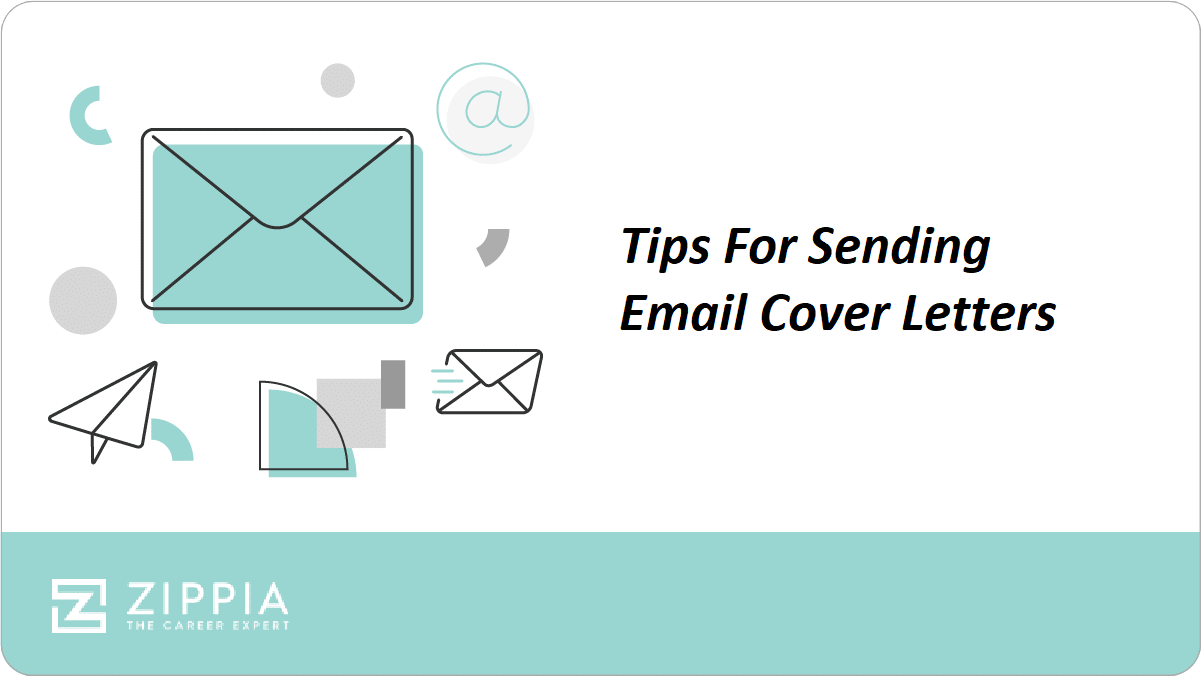
Tips For Sending Email Cover Letters
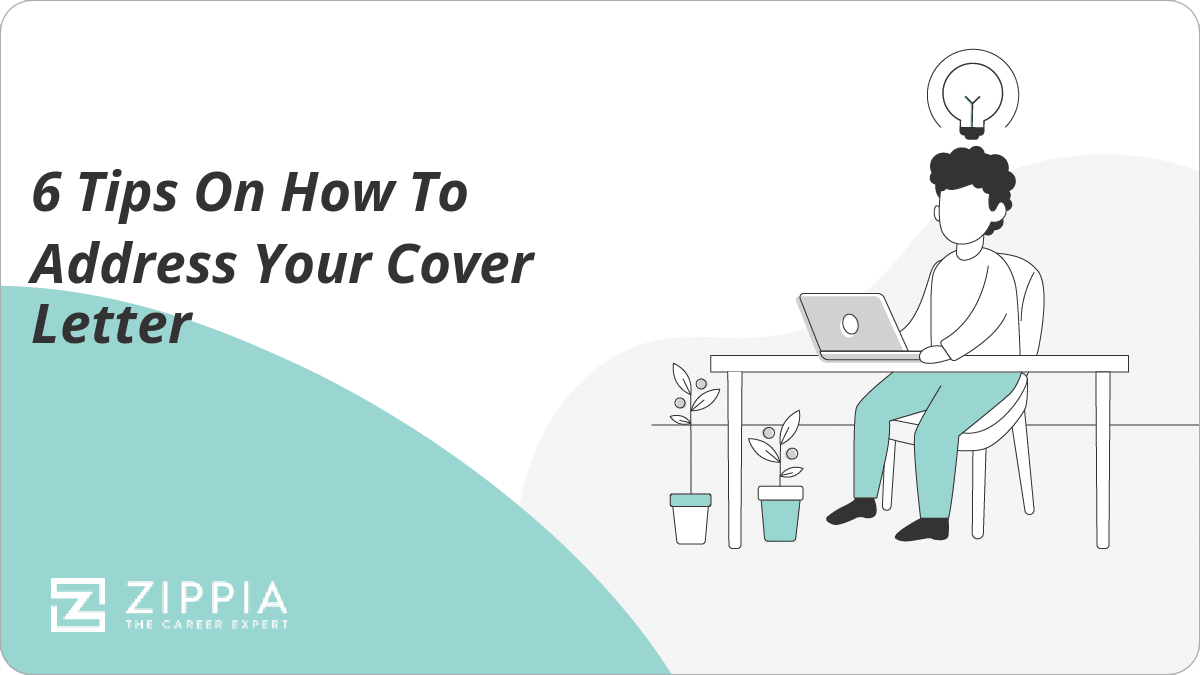
6 Tips On How To Address Your Cover Letter
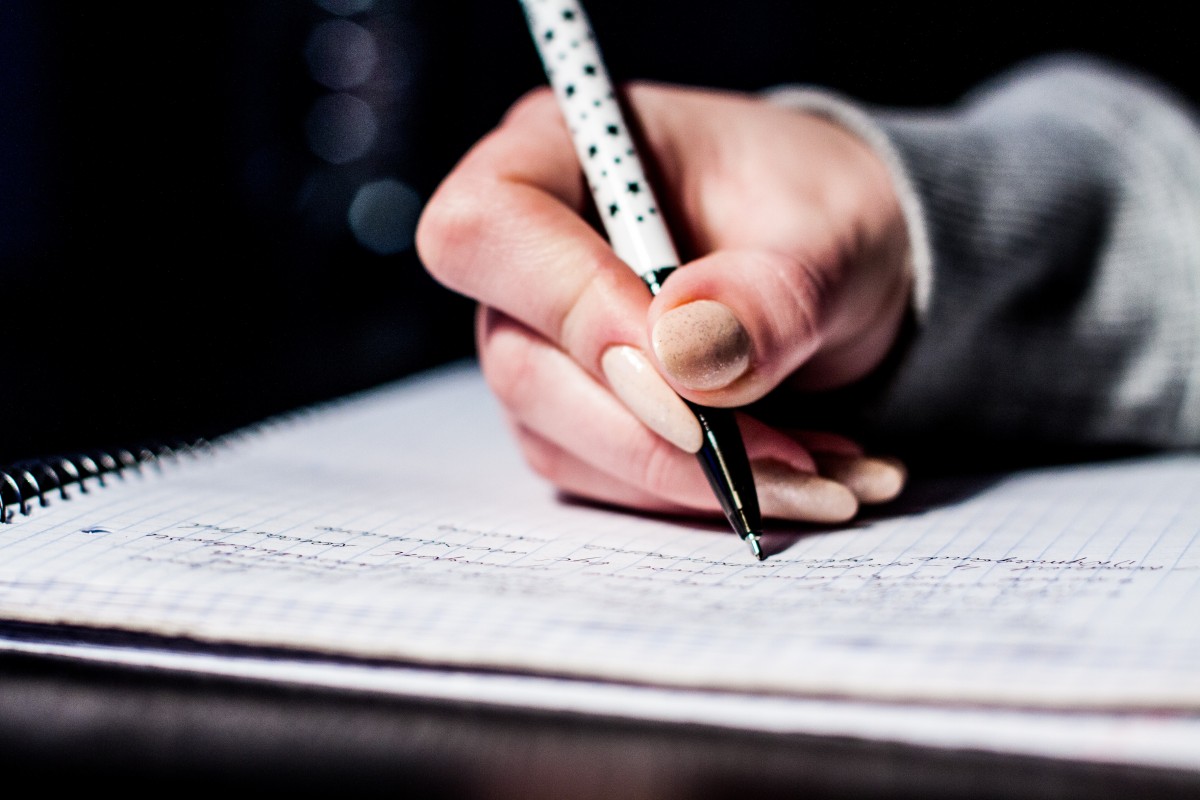
How To Write A Cover Letter Body (With Examples)
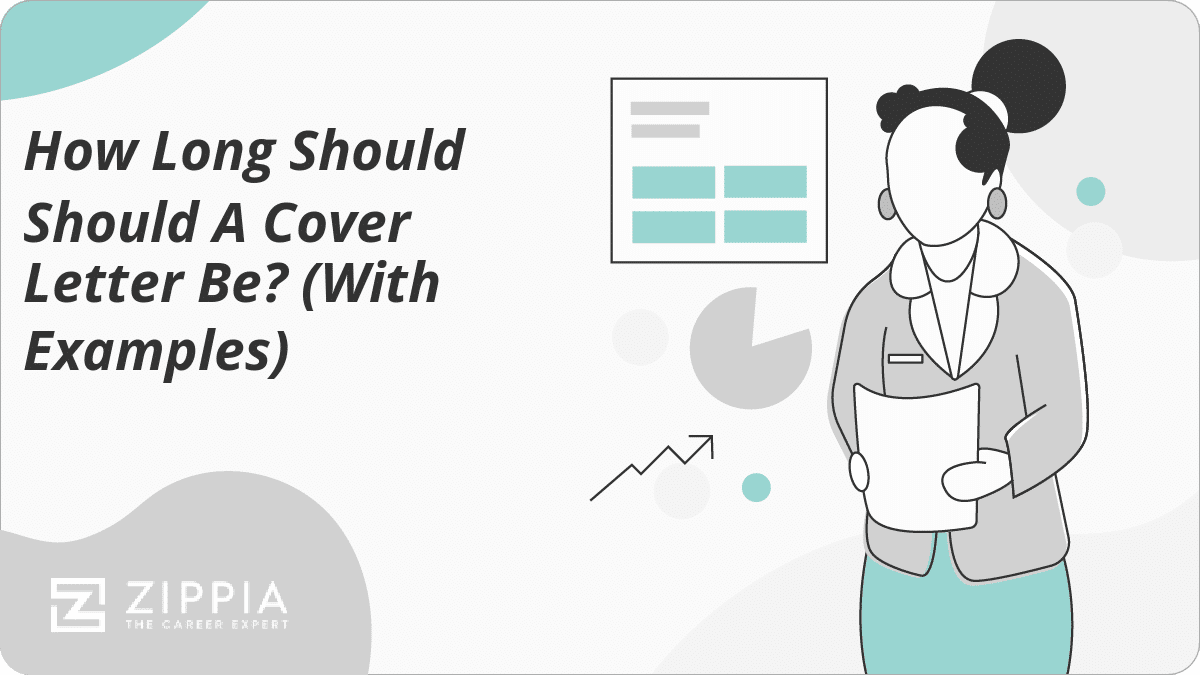
How Long Should Should A Cover Letter Be? (With Examples)
- Career Advice >
- Cover Letter >
- Grades 6-12
- School Leaders
NEW: Classroom Clean-Up/Set-Up Email Course! 🧽
10 Strong Scholarship Recommendation Letter Examples
Help make college more affordable for your students.
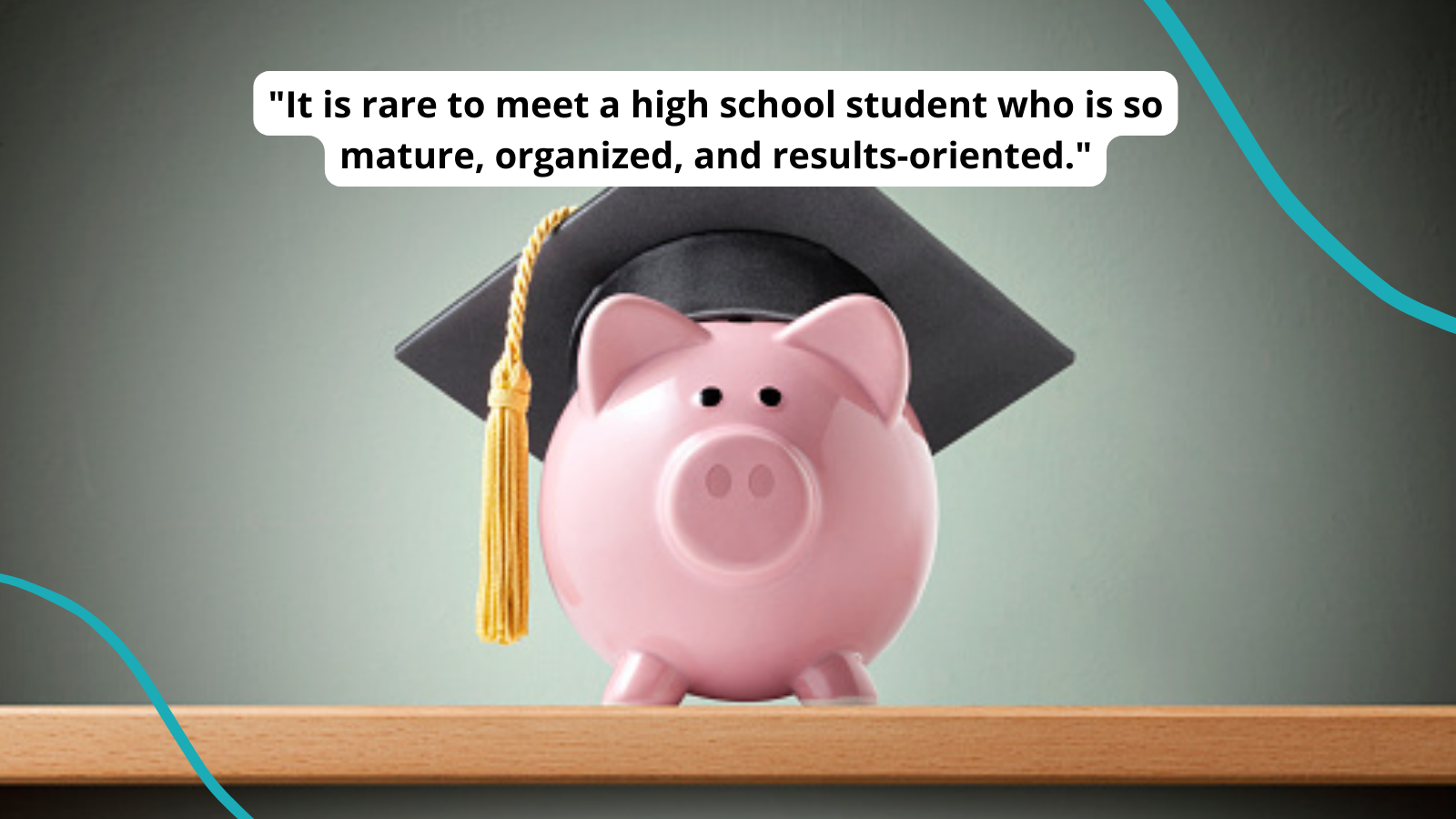
Paying for college takes a lot of planning. Tuition costs rise every year and graduates are buckling under the weight of debt from loans. For some, the expense of higher education is prohibitive, with many talented students being forced to cut their dreams short. Scholarships can make getting a degree more affordable. Students qualify based on academic performance, special interests, or financial needs. If you’ve been asked to help with the process, we’ve got you covered! Here’s a list of sample recommendation letters for scholarship applications that best meet your students’ needs.
How To Write Scholarship Recommendation Letters
If you’ve been asked to write a recommendation letter for your student’s scholarship, you might feel overwhelmed. You want to help your student, but you’re worried your letter won’t be good enough. In the end, you can only do your best, so lead with your heart and consider the following suggestions:
- Use letterhead and add your personal information (full name, title, school name, etc.) in the top left corner.
- Fill the whole page (at least 300 words) with an introduction, two or three paragraphs, and a conclusion.
- In the first paragraph, introduce your student, specify the scholarship for which they are applying, and share details about the nature and length of your relationship.
- In the body paragraphs, describe the ways your student is suitable and deserving of the scholarship.
- In your final section, pull everything together and emphasize your student’s strengths as well as the reasons why you are endorsing them.
Here’s a quick video on how to craft an effective scholarship recommendation letter:
Don’t feel you can honestly provide a positive recommendation? Gently decline their request for a letter. Avoid putting yourself in a position where you will have to be insincere. You don’t want to write something negative because it could cost the student an opportunity to earn a scholarship.
Sample Recommendation Letters for Scholarship Applications
1. general scholarship recommendation letter.
This is a great sample scholarship letter if you’re trying to offer a rounded view of a student’s performance in high school. You’ll include information about your experience with them as well as your thoughts on their potential success in a higher-education setting.
2. Sample Rhodes Scholarship letter
If your student is a candidate for a prestigious award such as the Rhodes Scholarship, this sample scholarship letter will give you an idea of what to share with the selection committee. With these types of recommendation letters, you want to provide as much praise and positive information as possible.
3. Scholarship letter for math students
There are many great scholarship opportunities for strong math students. This sample recommendation letter outlines how to share not only your student’s math talents but the other traits that make them a good candidate as well.
4. Leadership scholarship sample letter
This helpful scholarship recommendation letter offers an example for highlighting leadership skills. Back up your endorsement by sharing specific situations as well as participation in any committees, programs, and events where your student excelled.
5. Scholarship letter for international studies
Does your student plan to go abroad? If so, review this sample for writing a strong letter of recommendation for this specific type of scholarship. Be sure to include evidence as to why you believe your student is well rounded and exceptional.
6. Environmentalist scholarship letter
Has one of your students decided to pursue a degree in environmental sciences and wildlife? If so, this scholarship recommendation letter is a good example because it concisely highlights their strengths and shares why they would make a good candidate.
7. Scholarship letter for students who need financial assistance
No one should miss out on a college education because they can’t afford to pay. You can help them overcome this barrier! This excellent sample letter of recommendation shows the details to include for scholarships based on financial need.
8. Scholarship recommendation letter for STEM students
There are many scholarships for students who plan to pursue a career in STEM fields. If you’ve been asked to write a letter of recommendation for this type of scholarship, this sample will give you a good idea of what to include.
9. Greek society scholarship letter sample
Fraternities and sororities can be a great source of financial support for college and university students. Review this sample recommendation letter for scholarship applications for Greek society candidates.
10. Personal endorsement for scholarships
This sample recommendation letter for a scholarship application is best when you can’t vouch for the prospective student’s academic performance but want to share information about their personal character and how it relates to the scholarship program.
Do you have a great sample recommendation letter for scholarship applications? Please share it in the comments below!
Plus, check out the ultimate guide to college scholarships, want more articles like this be sure to subscribe to our newsletters ..
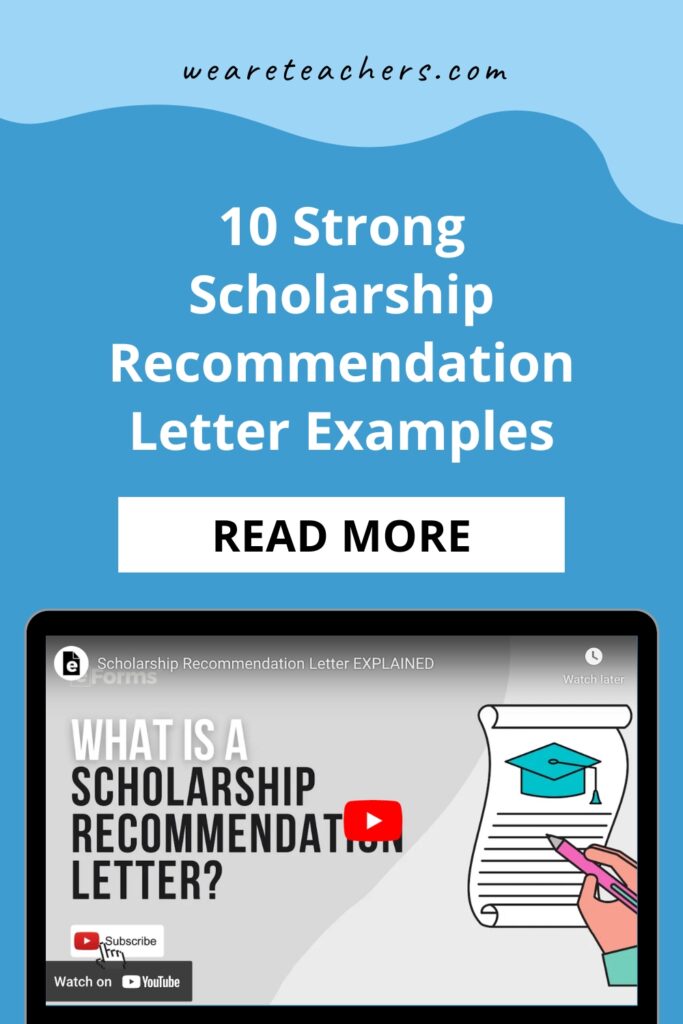
You Might Also Like
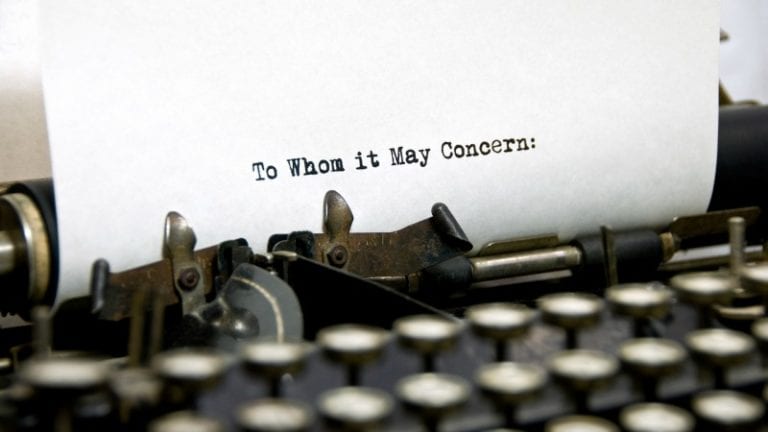
Tips for Writing a Genuine and Powerful College Recommendation Letter
Your words can make a big difference. Continue Reading
Copyright © 2024. All rights reserved. 5335 Gate Parkway, Jacksonville, FL 32256

COMMENTS
[email protected]. Dear Dr. Lawrence, I am interested in applying for the role of Artist in Residence as advertised in the university's magazine. I hold a BA with honors in Fine Arts and have twelve years of experience running my own art studio and shop. Currently I run my own art studio and small shop in downtown Prenton where I am working on ...
6. Conclude with enthusiasm: End your cover letter by reiterating your interest in the role and your eagerness to contribute your artistic talents. Remember, everyone has to start somewhere. Even without professional experience, your passion and dedication can still make you a strong candidate for an artist role.
Writing a Artist in Residence cover letter is your introduction to the hiring manager. In order to stand out companies want you to present your relevant work history and skills according to the job you are applying for. Whether you're seeking an entry-level position or have been in your career for a few years, exposing your relevant ...
Danville, KY, 40422. (859) 045-4972. [email protected]. Dear Mr. Jacobs, I'm writing to you regarding the position of Artist-in-Residence, which I discovered on Art Center of Bluegrass's website. I have over 5 years of experience as a professional artist, as well as a portfolio showcasing accomplishments and creative achievements from ...
Here's how to write a cover letter for an art job: 1. Format Away Your Cover Letter. Just like you need a canvas to paint or fabric to sew, your art cover letter needs a base, too. Create a cover letter format that holds everything together: Pick the same cover letter design as your artist resume to stay consistent in your job application.
Artist Cover Letter Sample. Use this artist cover letter sample to build your letter and impress recruiters. Note that you need to adapt this example to your needs, and address the specific position you are applying for. You can easily customize it in our Cover Letter Builder. Your name. Your address. Your phone number.
Body of the Cover Letter. Write 2-3 paragraphs for the body of the cover letter to include relevant skills and experience for the arts-related position. This section should be tailored to the description of the open position. For instance, if you are writing a cover letter for museum job then the content would be vastly different from a theater ...
A cover letter is a general letter of introduction that identifies what you are asking for and what is included in the packet you are sending. If you are asking for money, the cover letter should state clearly in the first or second sentence exactly what you are asking for. Never bury this request deep in the letter as it should be easy to find.
Make your cover letter one page, 3-5 paragraphs, and 250-400 words long. Choose a suitable font, like Arial or Helvetica, instead of unprofessional, over-stylized typefaces. Set the font size to 10-12 pt. Adjust margins to 1 inch on all sides with 1.0 or 1.15 line spacing. Set text alignment to left or justified.
4. Include your contact information and the date. The first section of your cover letter includes your contact information and the date. You want to have your full name, city and province of residence, e-mail address, and phone number. Consider adding a link to your online portfolio to showcase your artistic work.
I may be contacted at (777)-340-6180, or by email at [email protected]. I look forward to the opportunity of meeting you at interview level, and I thank you for the opportunity to be considered for the post of Artist. Yours Sincerely, (Signature hand written in blue pen ink) Charles Merrill. Encl: Resume.
Dear Mr. Goodman, Dear Minuteman Press Hiring Manager: 3. "Hook" or introduction. Catch the reader's attention by citing an achievement from your resume or a key credential the employer seeks in applicants. Then, connect that highlight to your main strengths and overall candidacy for the advertised artist role.
Artist Cover Letter examples Write the best Cover Letters in 5 minutes 300+ samples and expert guides used by millions of users. ... Having worked for two environmental consultancies as artist-in-residence, I feel that my passion for the future of our planet and twenty years of drawings about it will give me an edge at Lastwell Group.
Key Components of a Strong Motivation Letter For Art Residency. Introduction: Begin with a captivating opening that hooks the reader and introduces yourself and your interest in the residency. Personal Background: Highlight relevant experiences, achievements, and artistic journey to showcase your passion and commitment.
Kristin Caters. 876-555-0132. [email protected] April 5, 2023 Dear Hiring Manager, I am excited to apply for the open Artist position at Great House Painting Today Inc. As an Artist with over four years of experience using various forms of paint and multimedia, the idea of working for such a well-known company is exciting and inspiring.
A letter of intent for artist residency sample is a document that outlines your interest in applying for a residency program. This letter should demonstrate your passion for your craft, your experience, and your goals for the program. It is important to tailor your letter to each residency program you apply to, as each program may have ...
Best Cover Letter Greetings: In your cover letter greeting, aim for a balance of professionalism and personalization. If you know the hiring manager's name, use it; if not, address the team or company as a whole. 1\. "Dear Hiring Team at [Company Name]," 2\. "Greetings [Company Name] Team," 3\. "Hello [Department Name] Department,"
Here are 8 tips to help you write a successful application! HADRIEN GERENTON at the De Ateliers - Amsterdam Art Residency. Research the residency Before you begin your application, research the residency you are interested in. Make sure it aligns with your artistic goals and the type of work you want to create. Understand the application ...
Artist Cover Letter Sample. Dear [Hiring Manager], I am writing to apply for the Artist position at [Company Name]. I am confident that my skills and experience will make me the ideal candidate for this role. My name is [Name] and I am an experienced artist with a Bachelor of Arts in Fine Arts from [School Name].
Here are five tips to keep in mind while writing your cover letter: 1. Include your contact details. Make it easy for the recruiter to contact you by adding your full name, address, phone number, email address, and any online portfolio links to your header. This allows the potential employer to explore your work and contact you if needed.
Courtesy of Crosstown Arts in Memphis, Tennessee. 7. Be concise, clear, sharp, and interesting. Every time you apply, you are asking someone to read what you wrote. Be kind to your readers. They might be looking at hundreds, or thousands of proposals, so go easy on the artspeak and jargon and get right to the point.
Artist Cover Letter Examples. Artists create works of art using multiple media. Examples of media they employ include painting, drawing, collage, sculpture, film, and performance. Based on our collection of resumes for Artists, typical activities include generating and developing ideas, building pieces of work, and maintaining portfolios.
New Media Company. 833 Rune Rd. Marigold, TX, 10987. If you're emailing your cover letter, you can simply include your name, telephone number, email address, and fewer address details (just your city and state will suffice). You can also include a zip code if you live in a big city with multiple zip codes.
4. Include your contact information and the date. The first section of your cover letter includes your contact information and the date. You want to have your full name, city and province of residence, e-mail address, and phone number. Consider adding a link to your online portfolio to showcase your artistic work.
1. General scholarship recommendation letter. This is a great sample scholarship letter if you're trying to offer a rounded view of a student's performance in high school. You'll include information about your experience with them as well as your thoughts on their potential success in a higher-education setting. 2.
Open the Page Thumbnails side panel. Select a page thumbnail, and choose Page Properties from the Options menu . In the Page Properties dialog, select Tab Order, and then select the tab order. Use Row Order. Moves through rows from left to right, or right to left for pages with a right-to-left binding. Use Column Order.